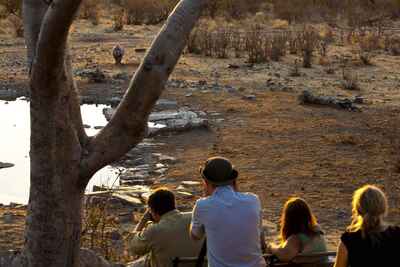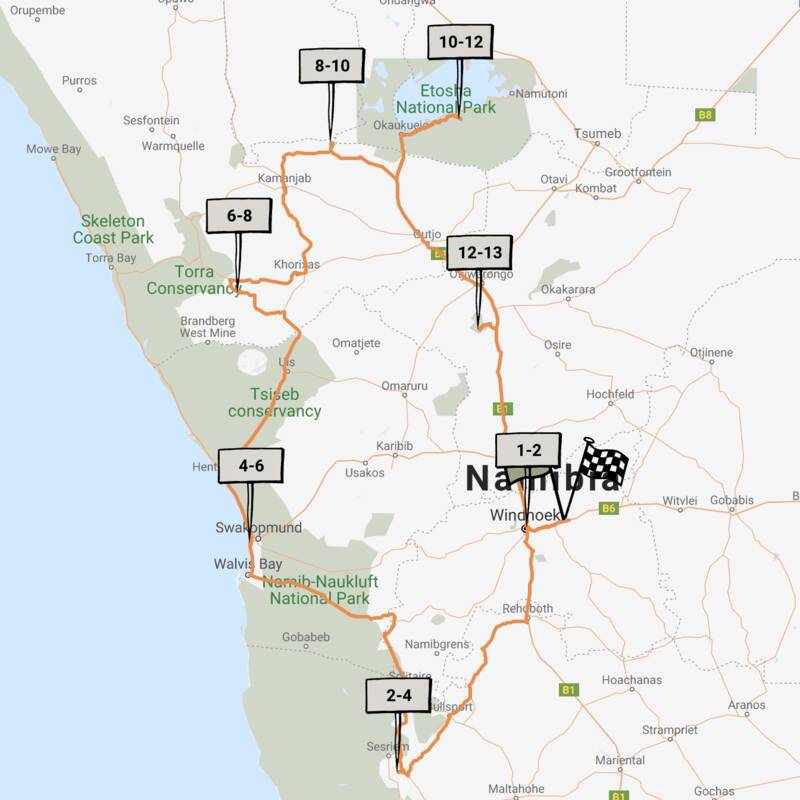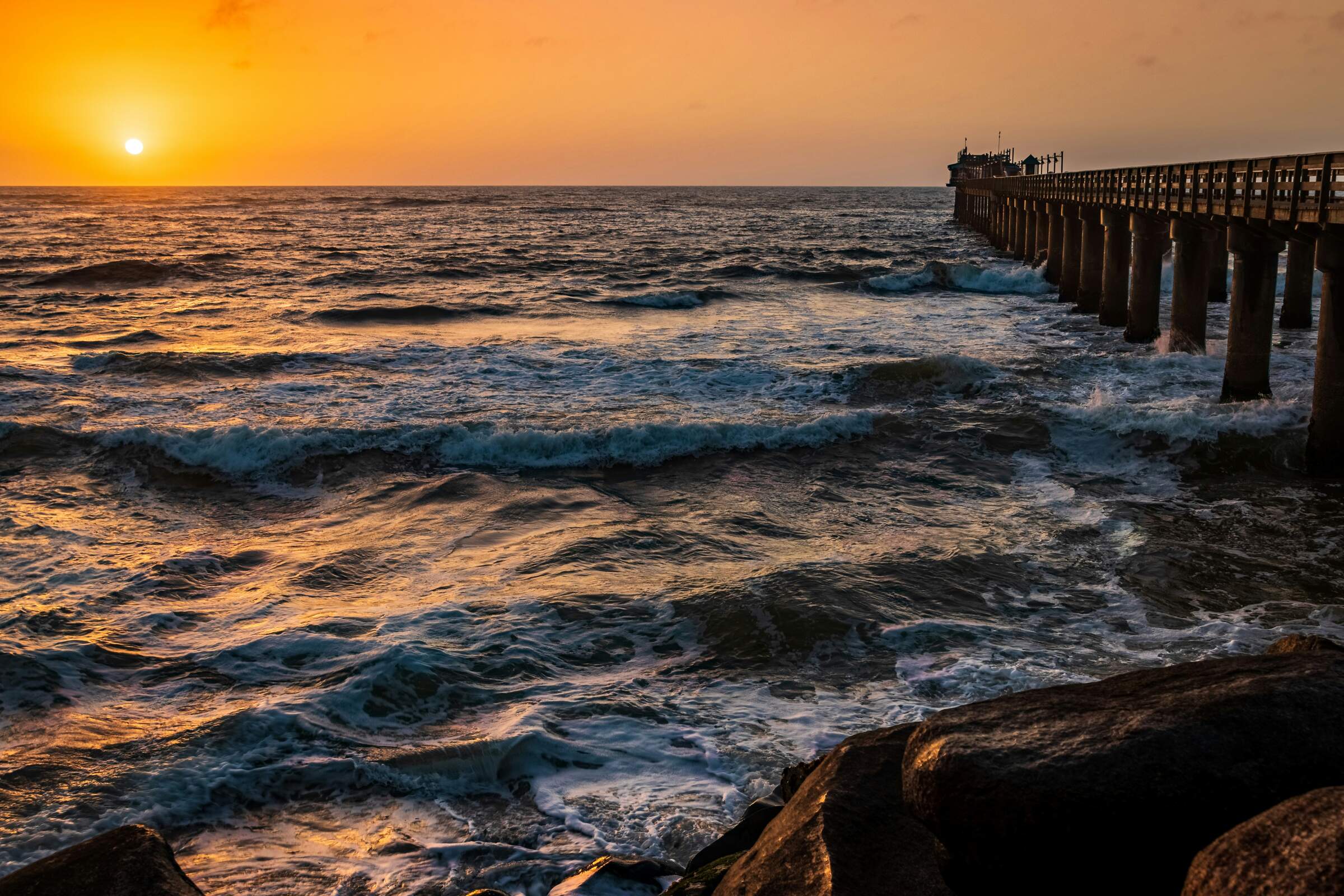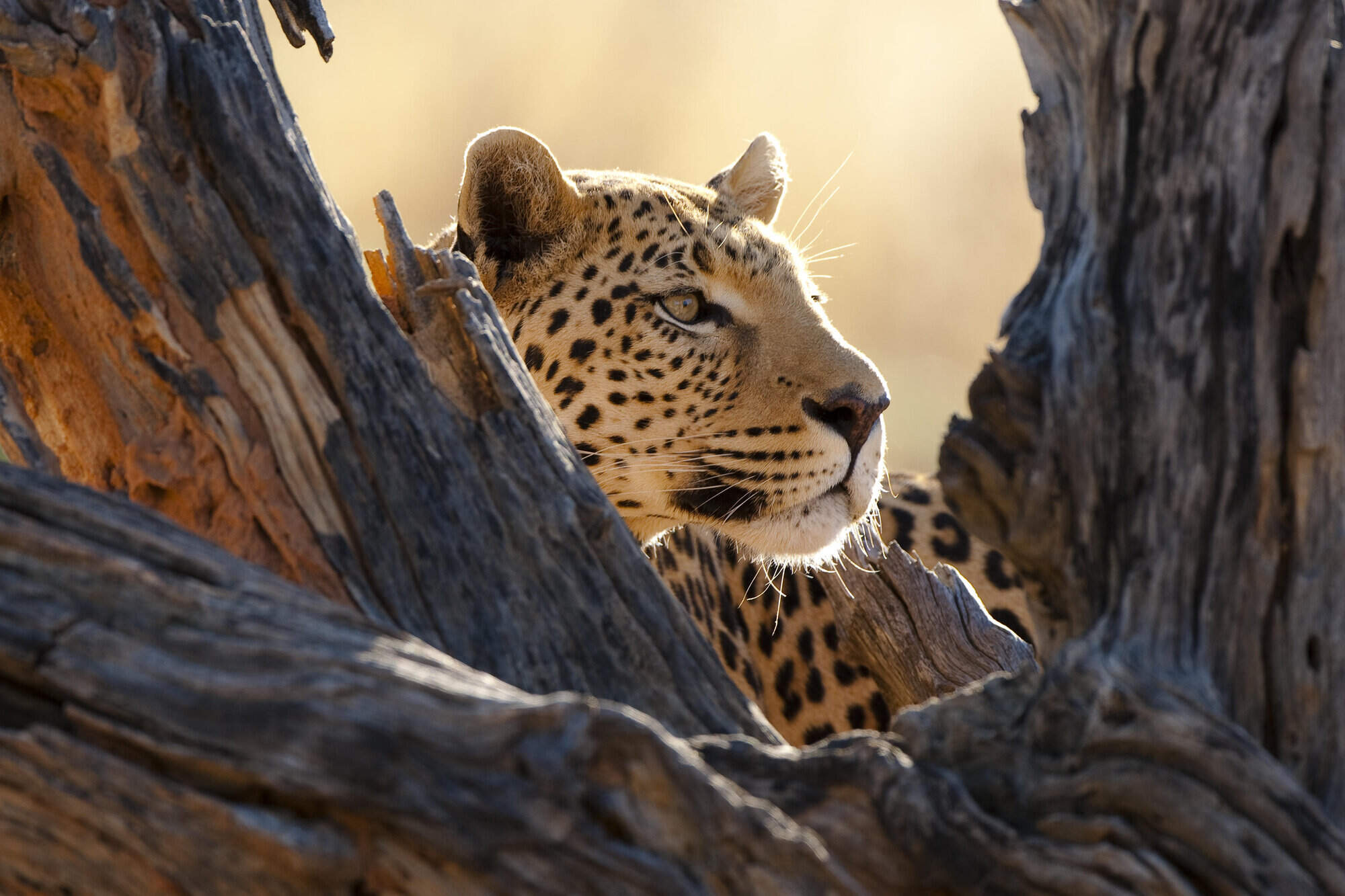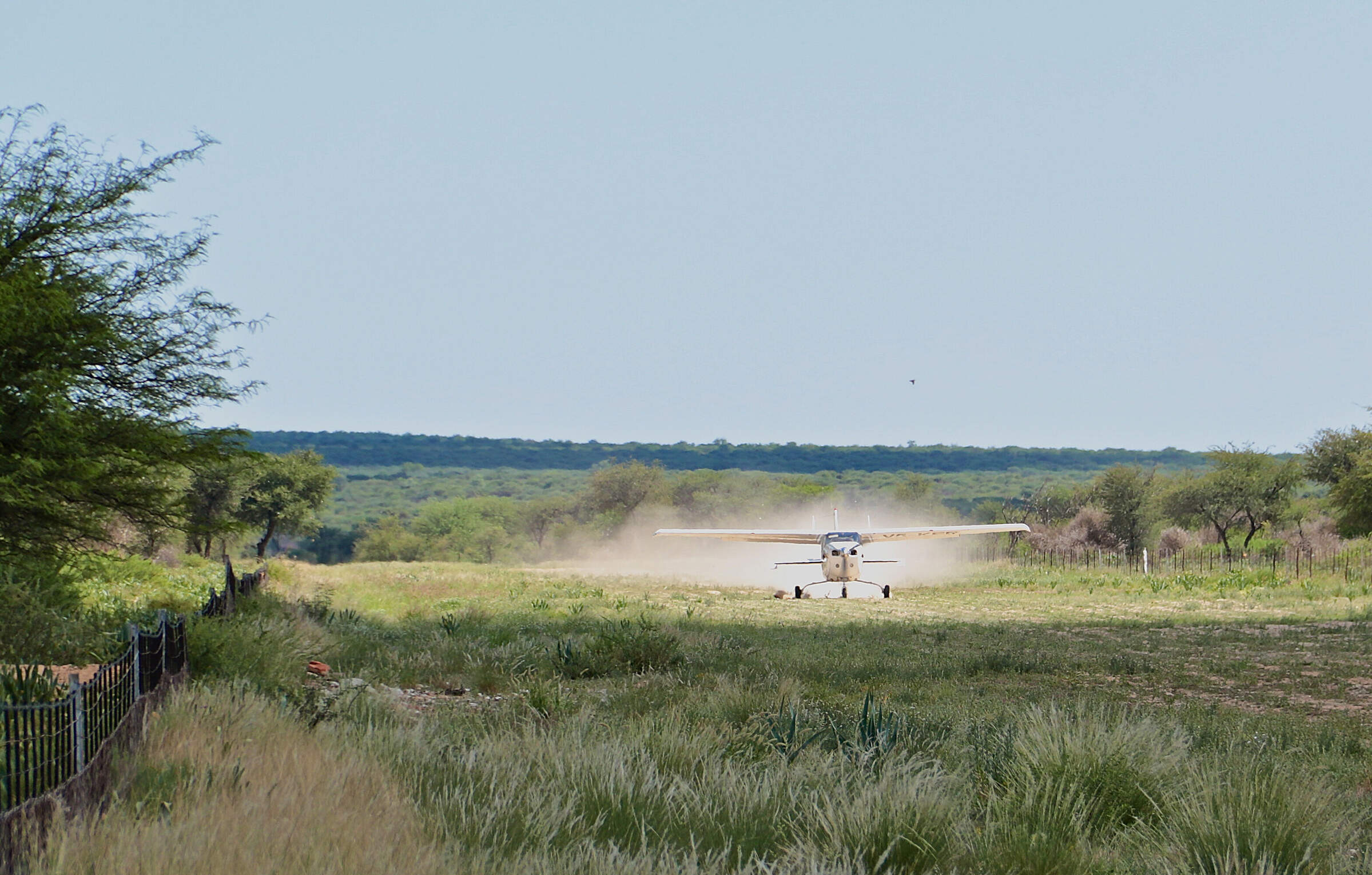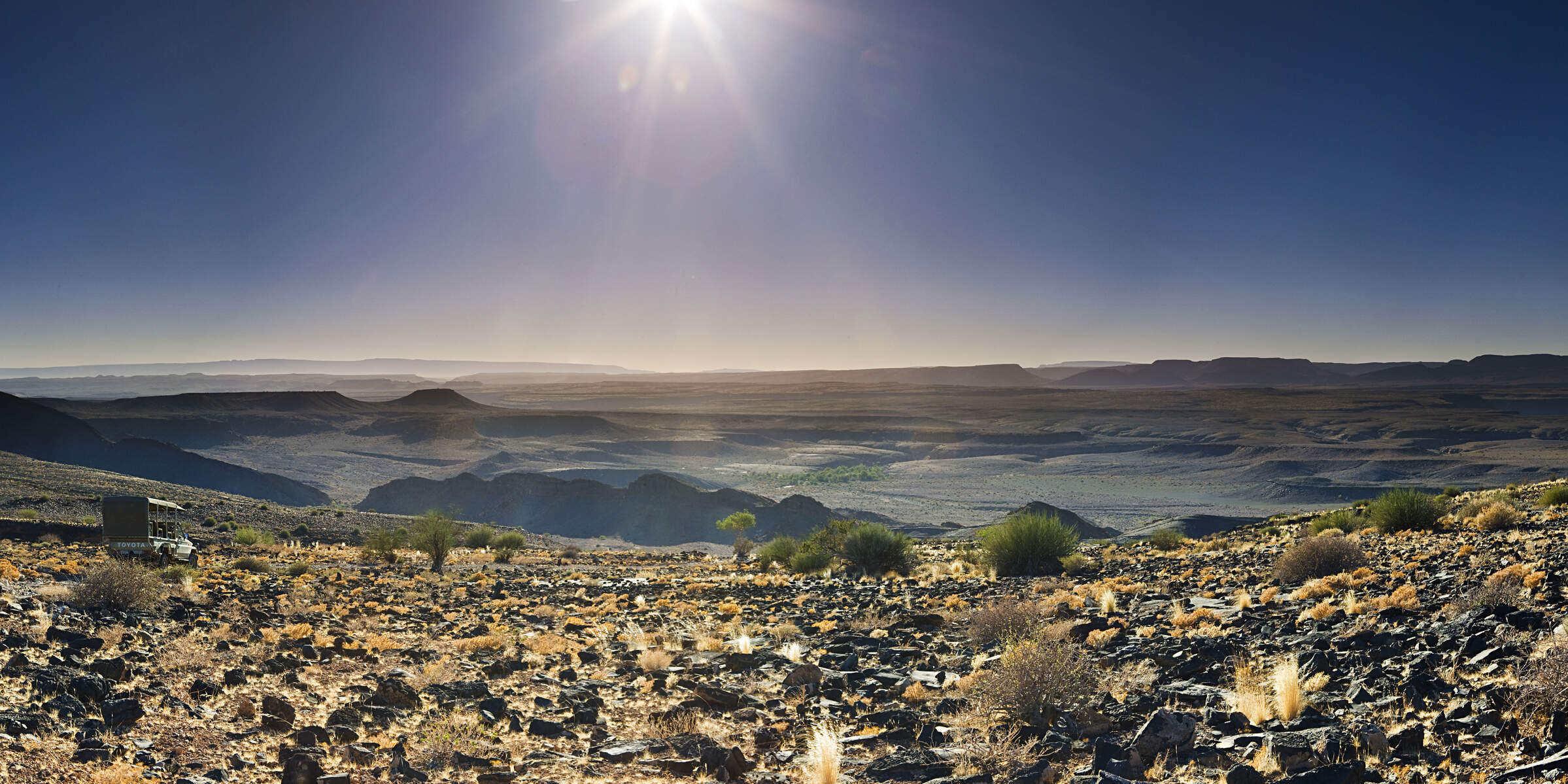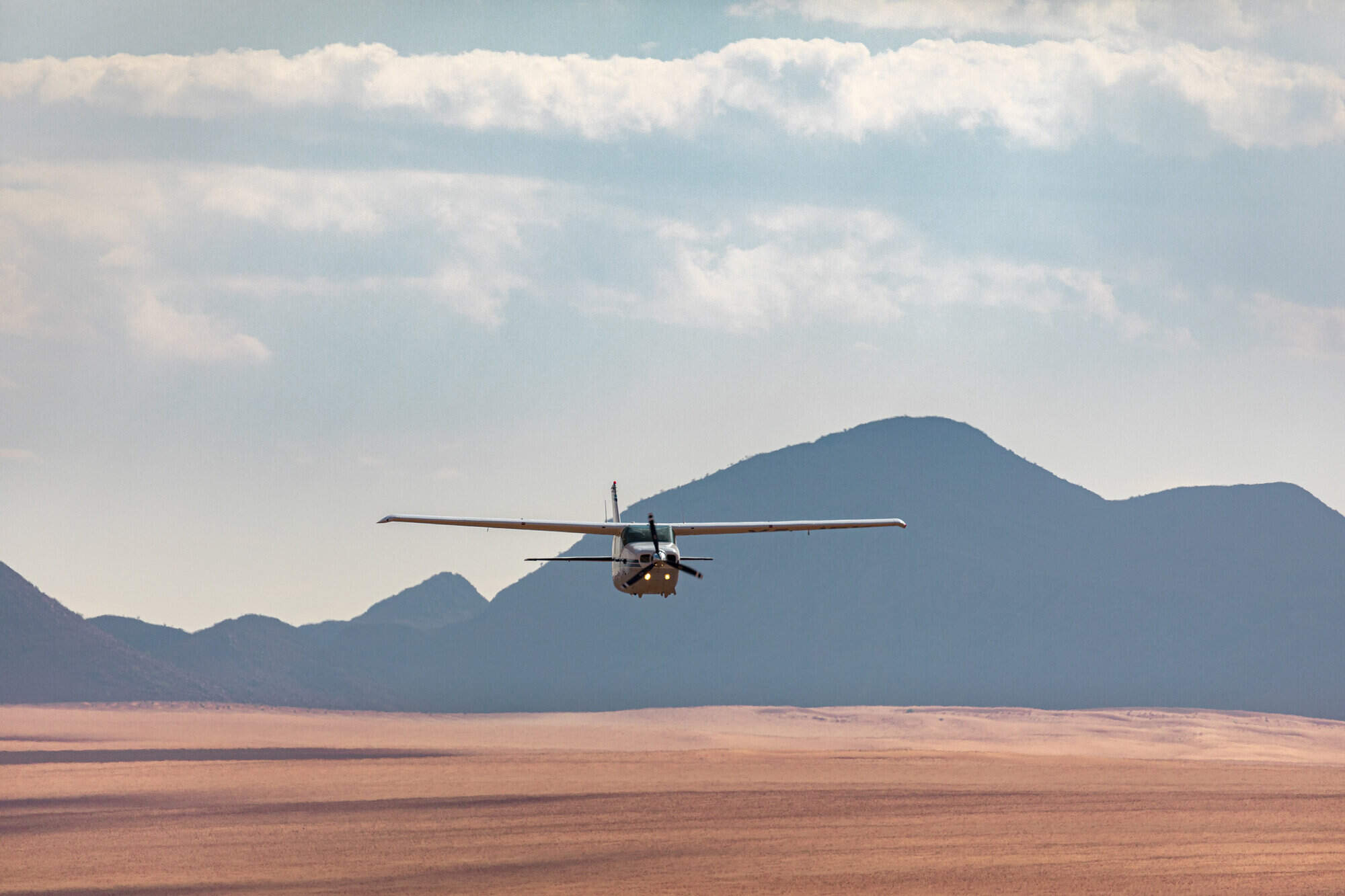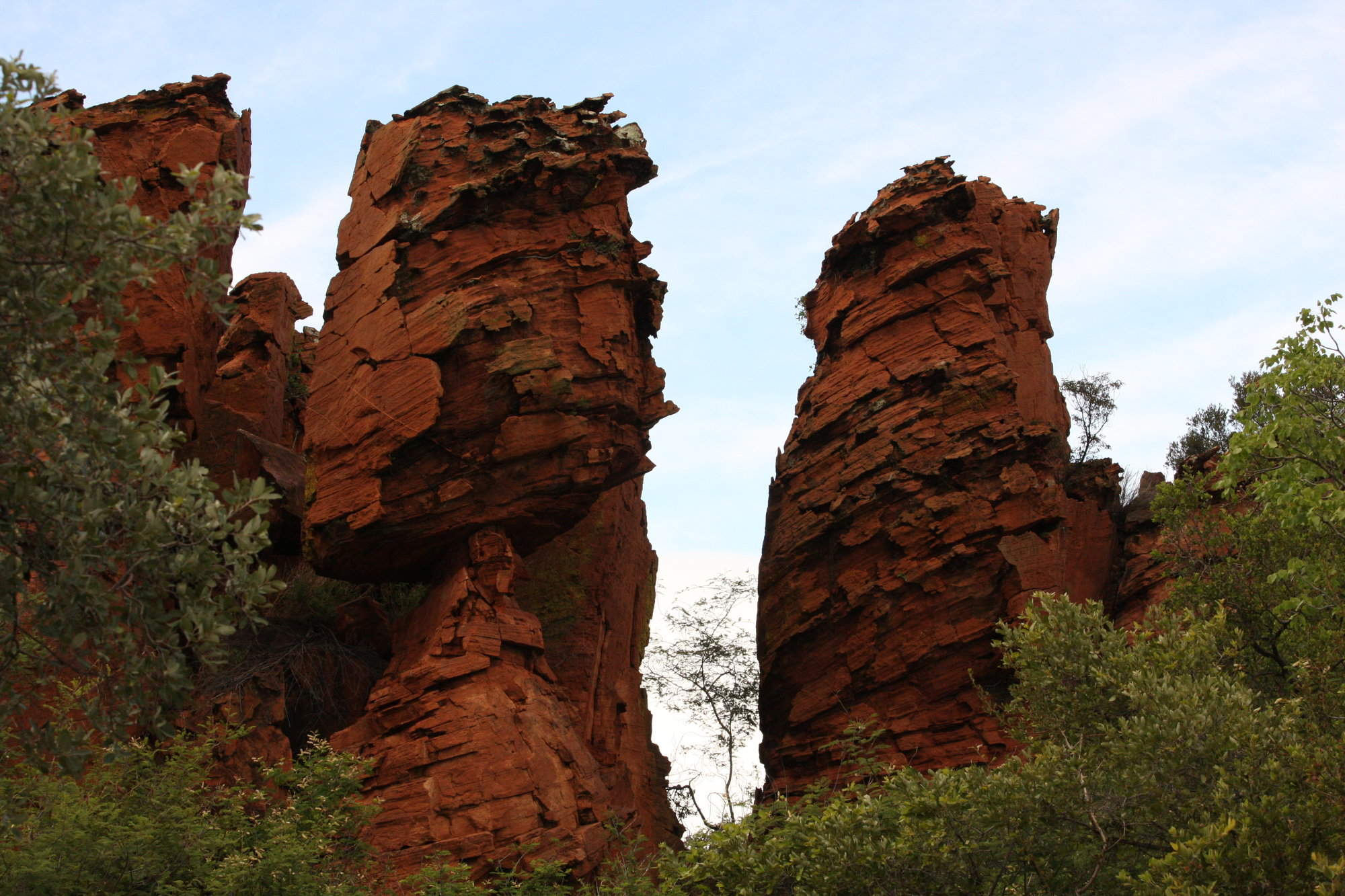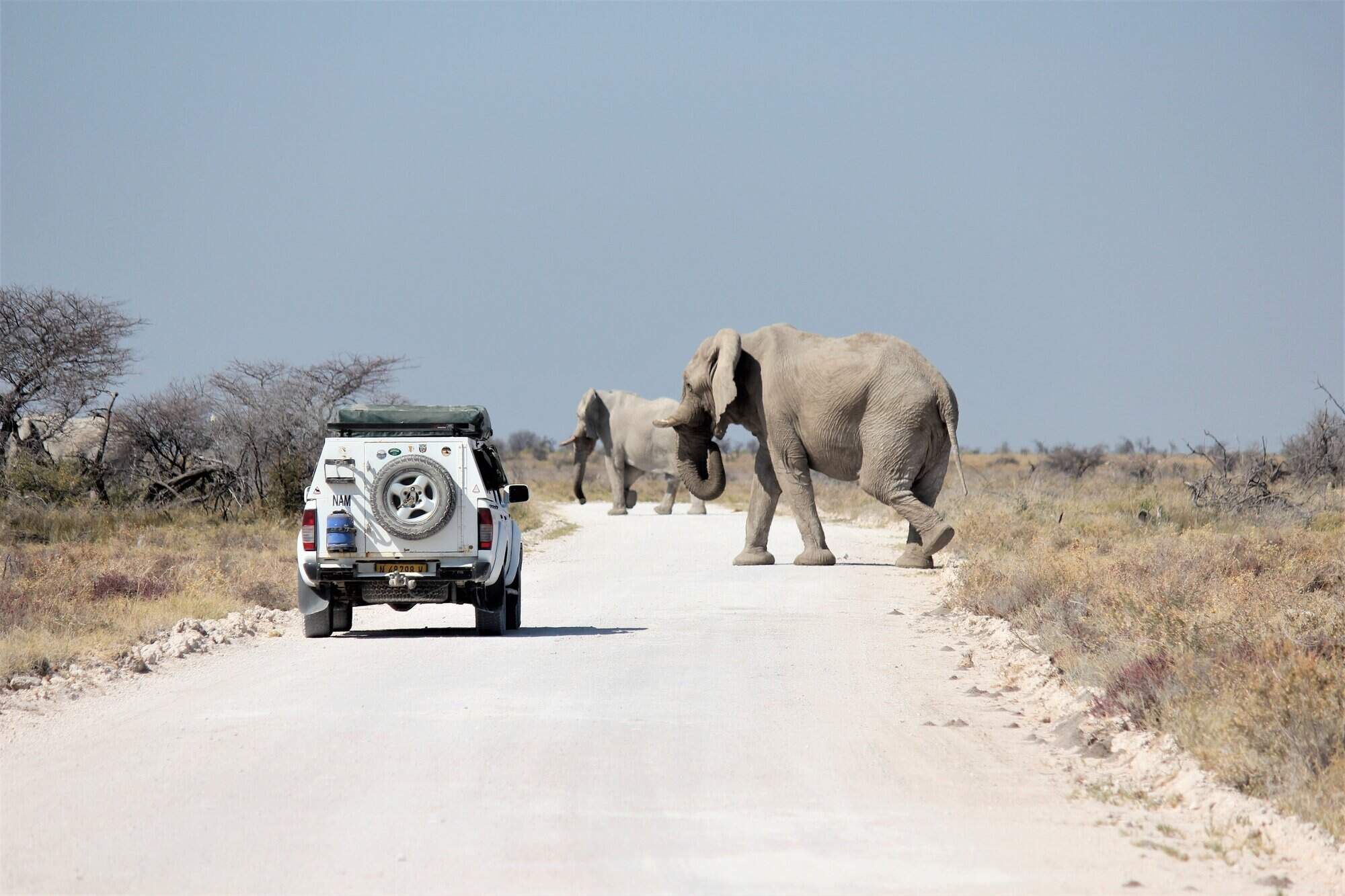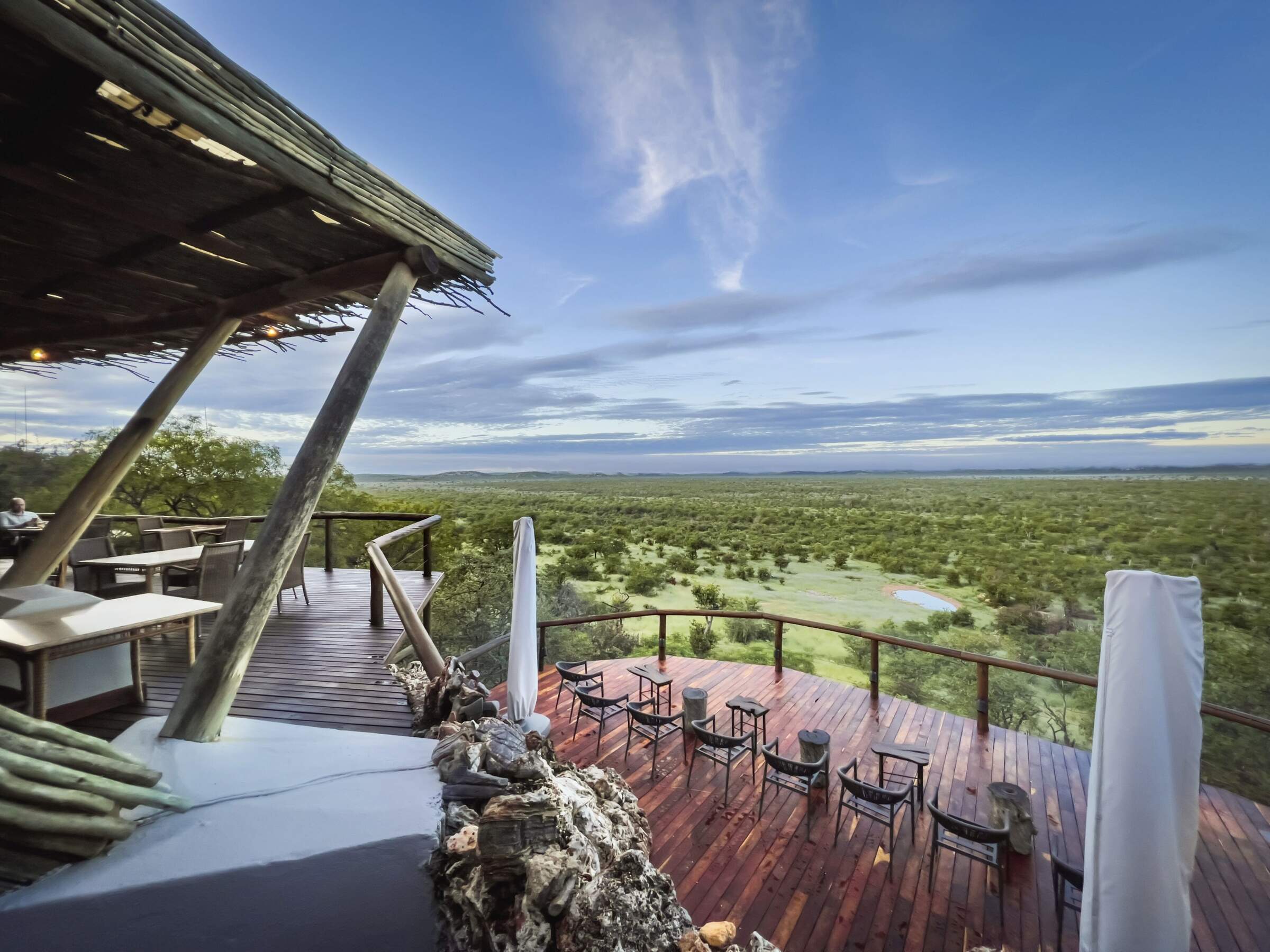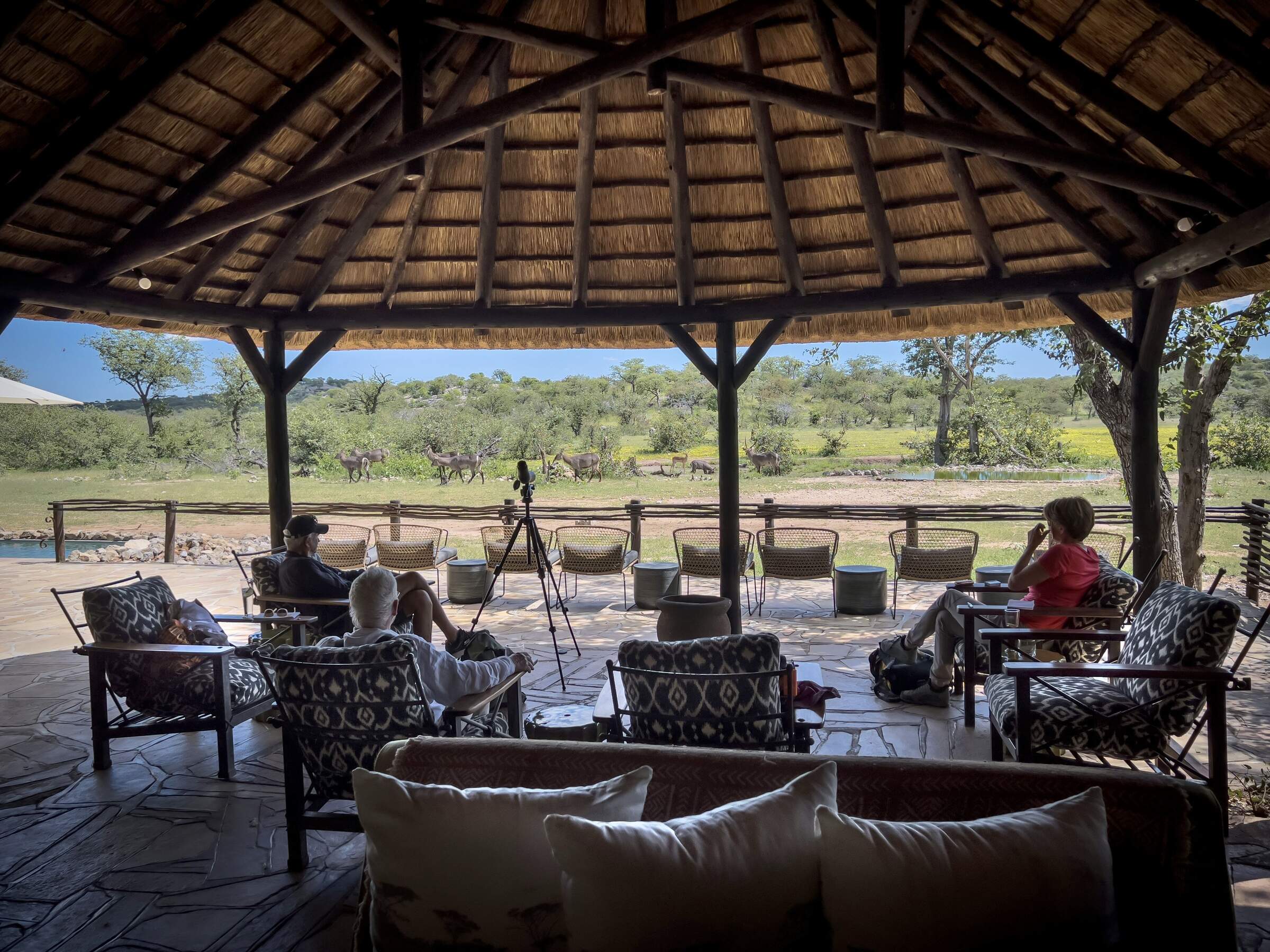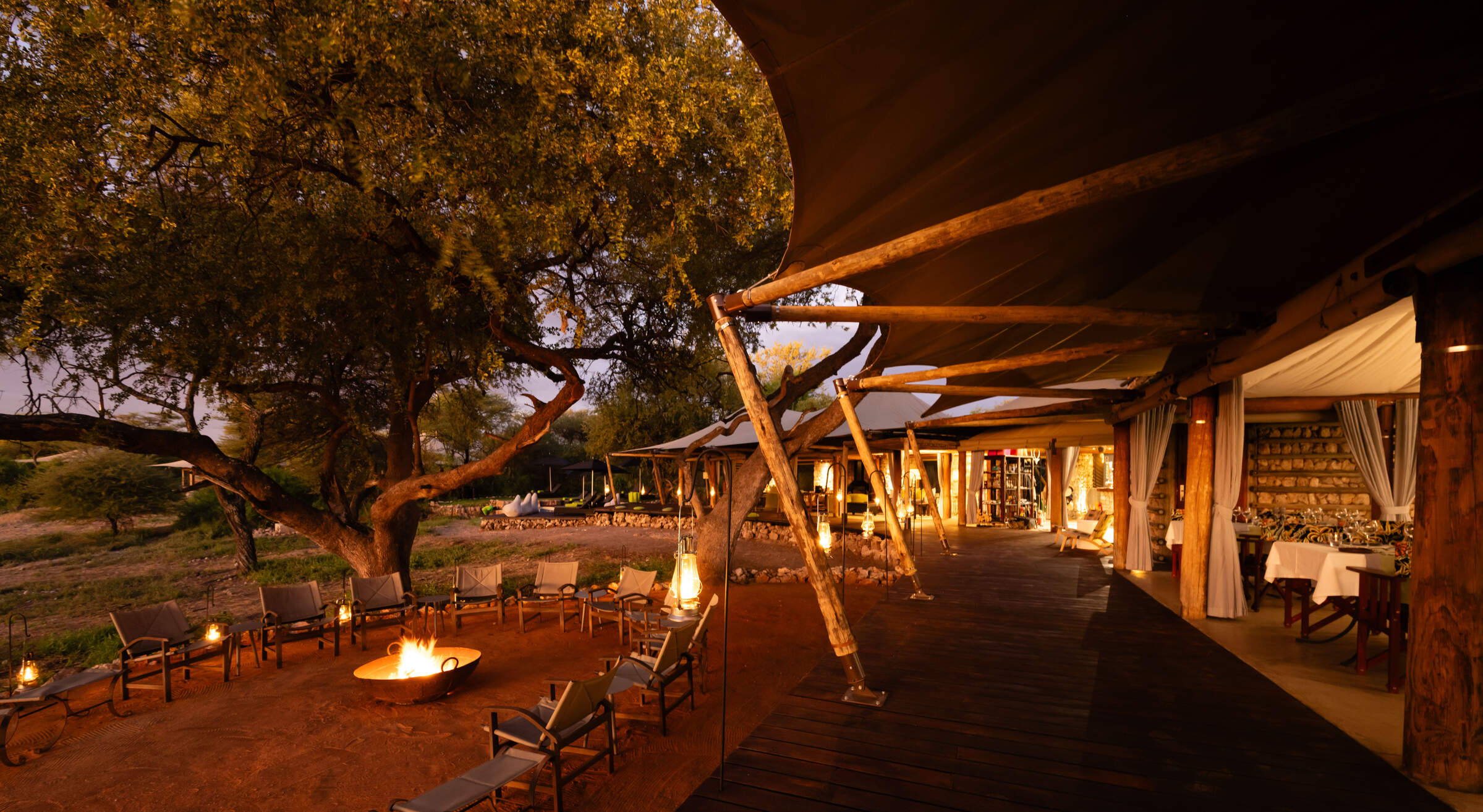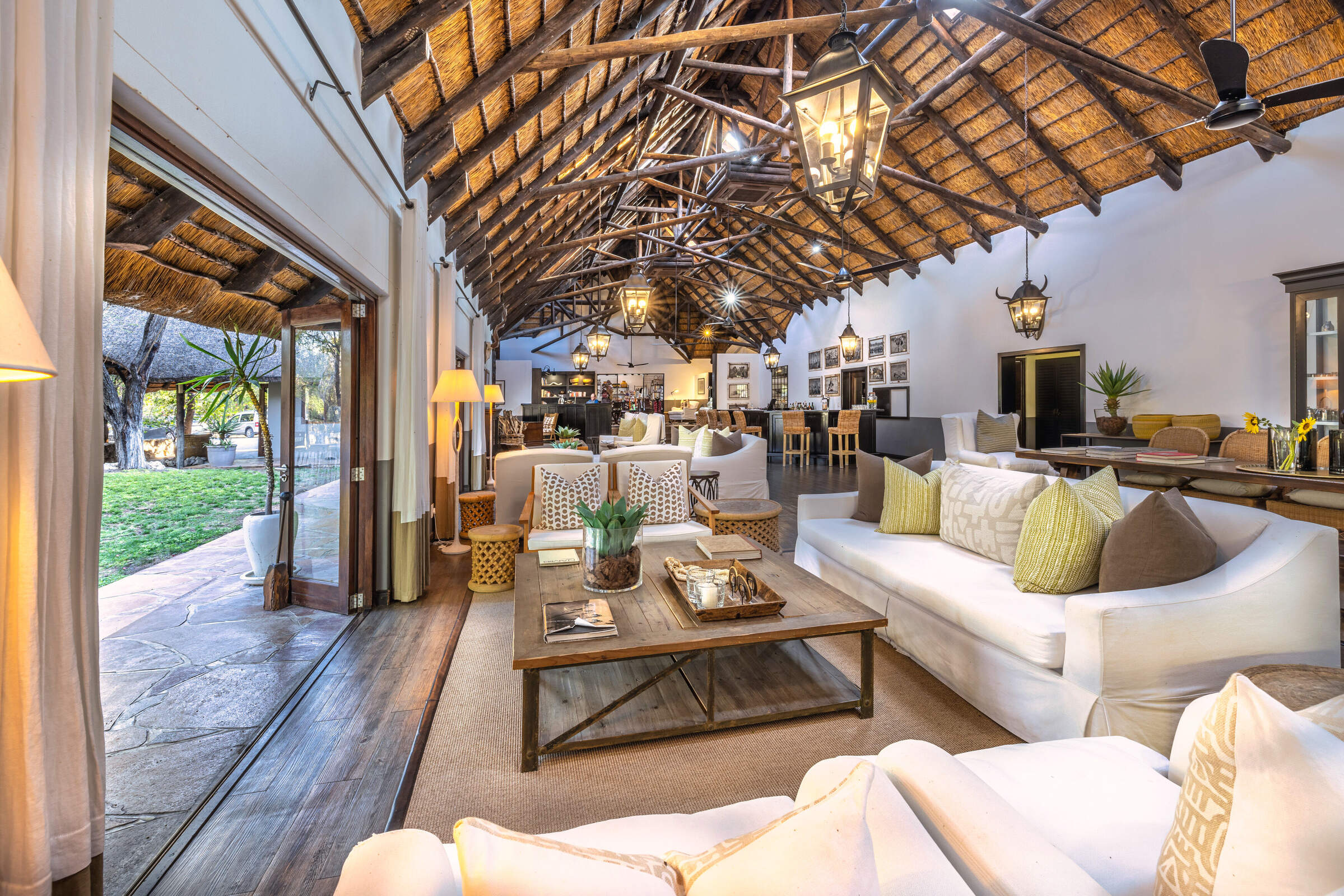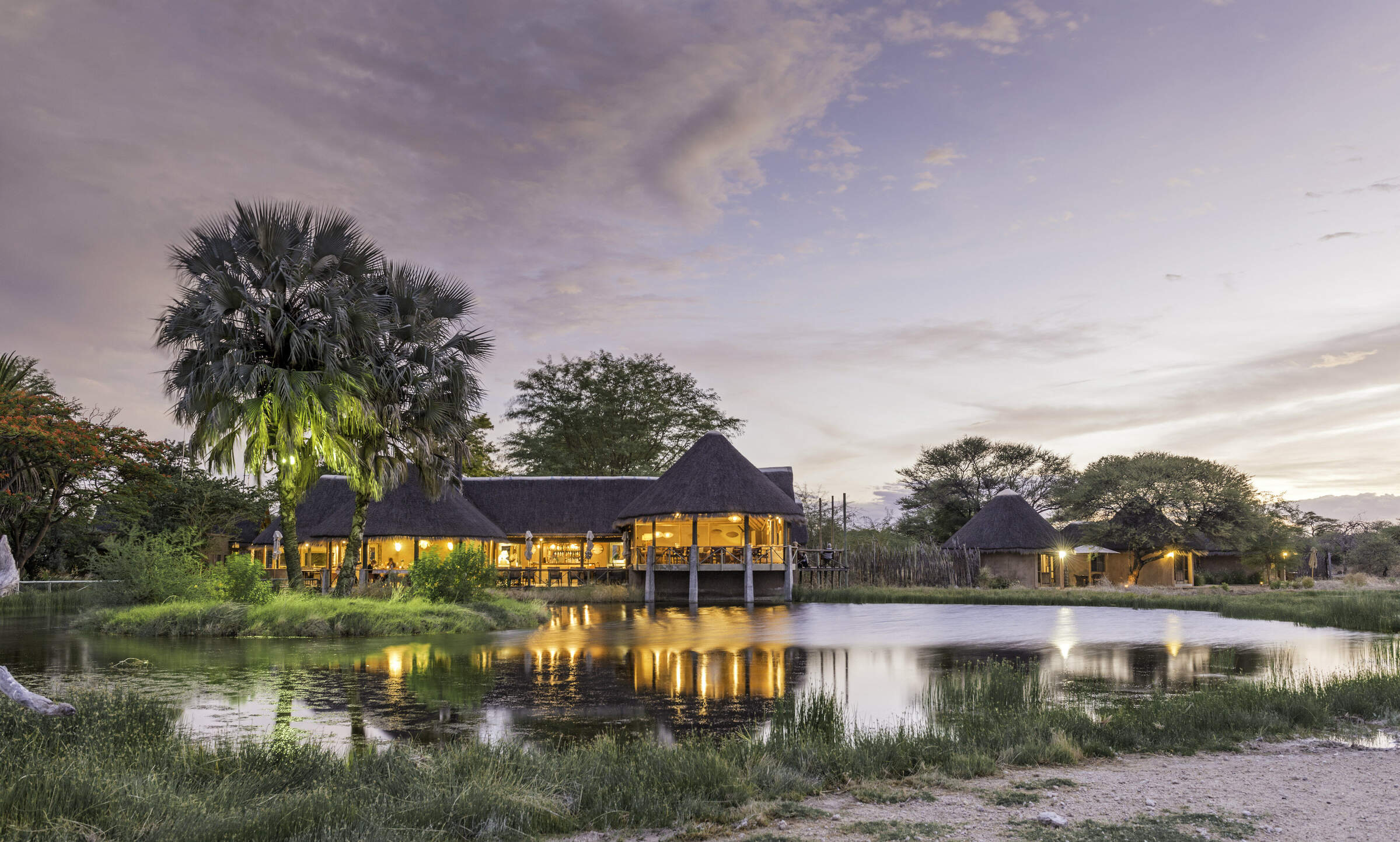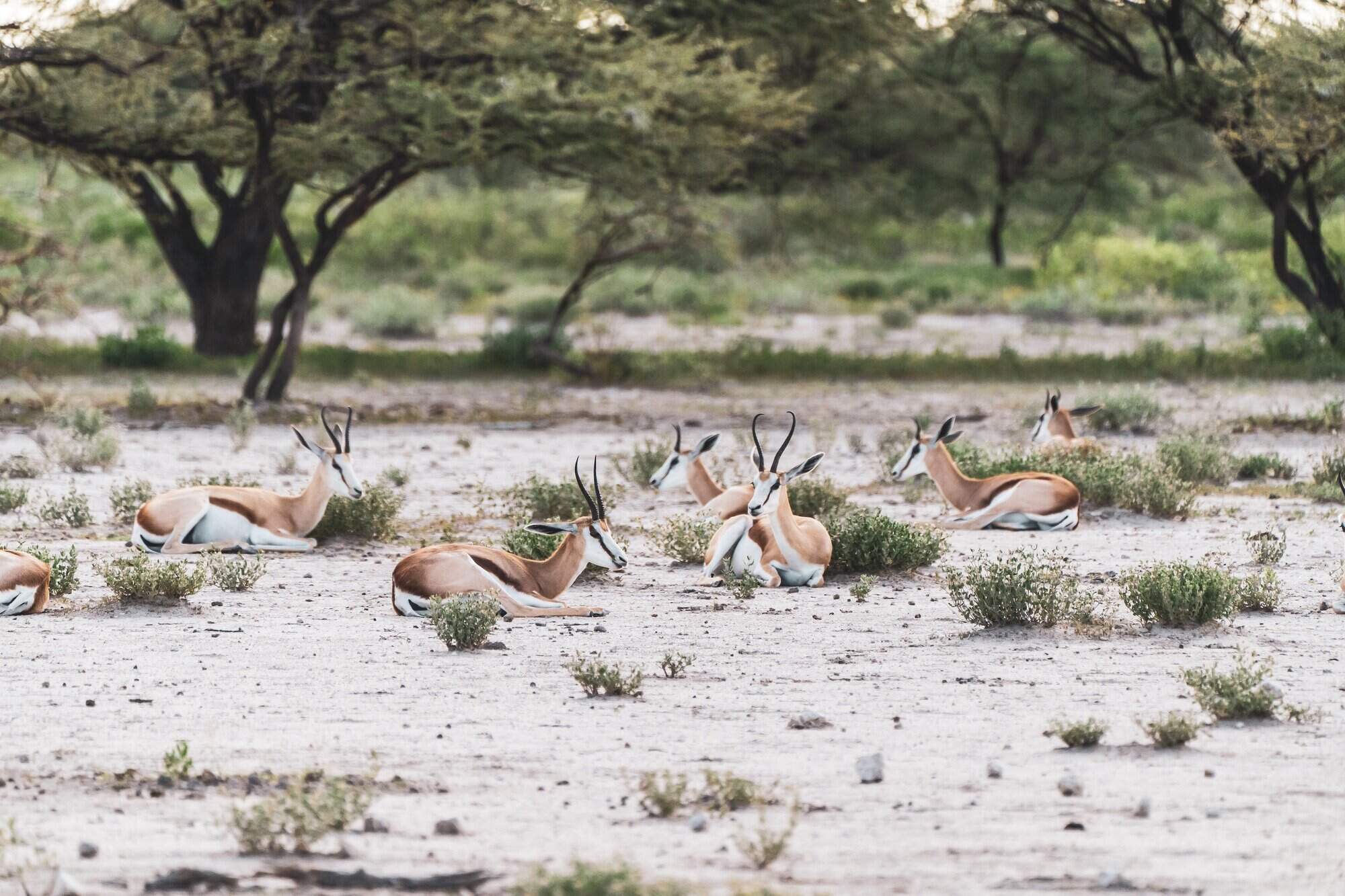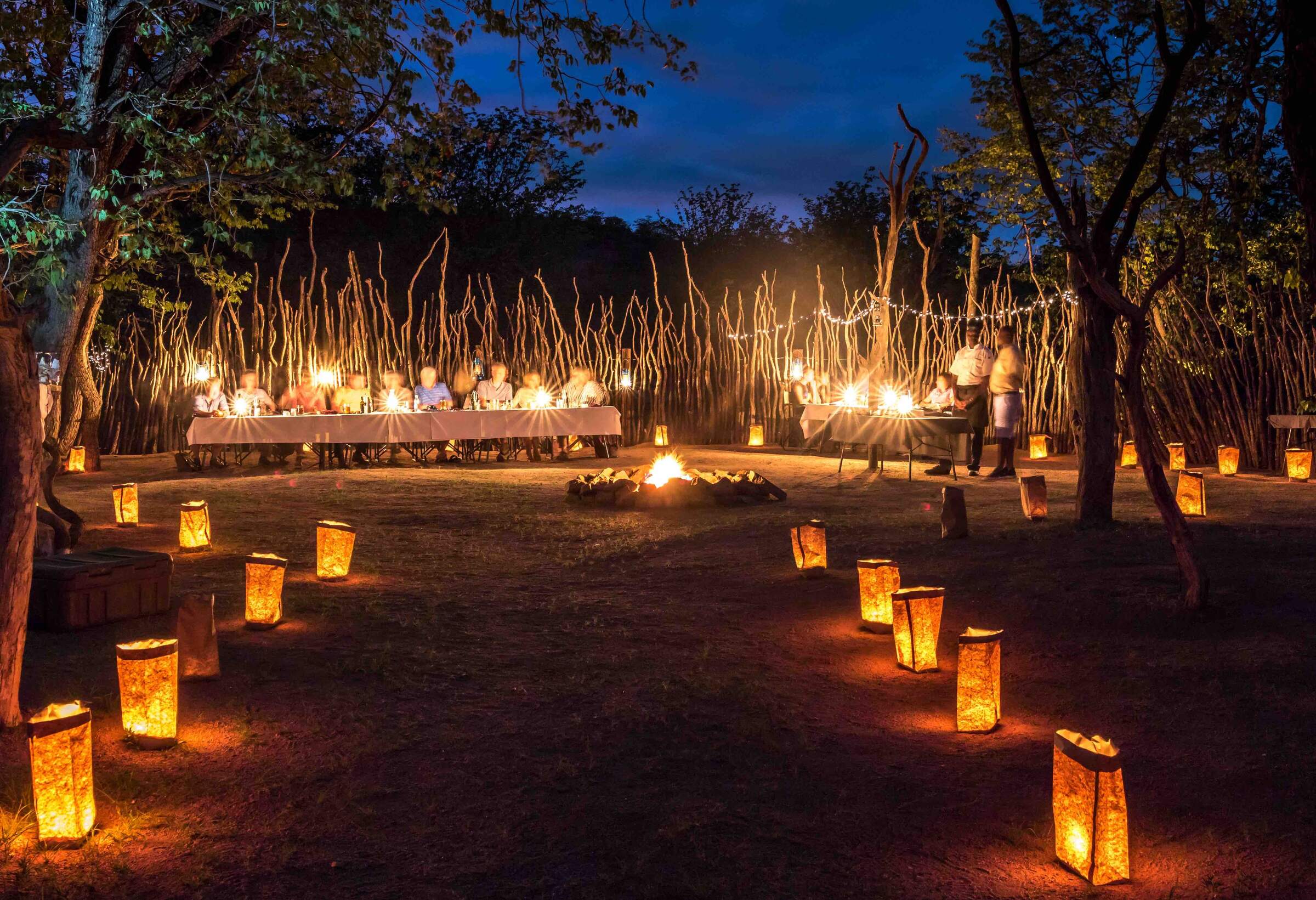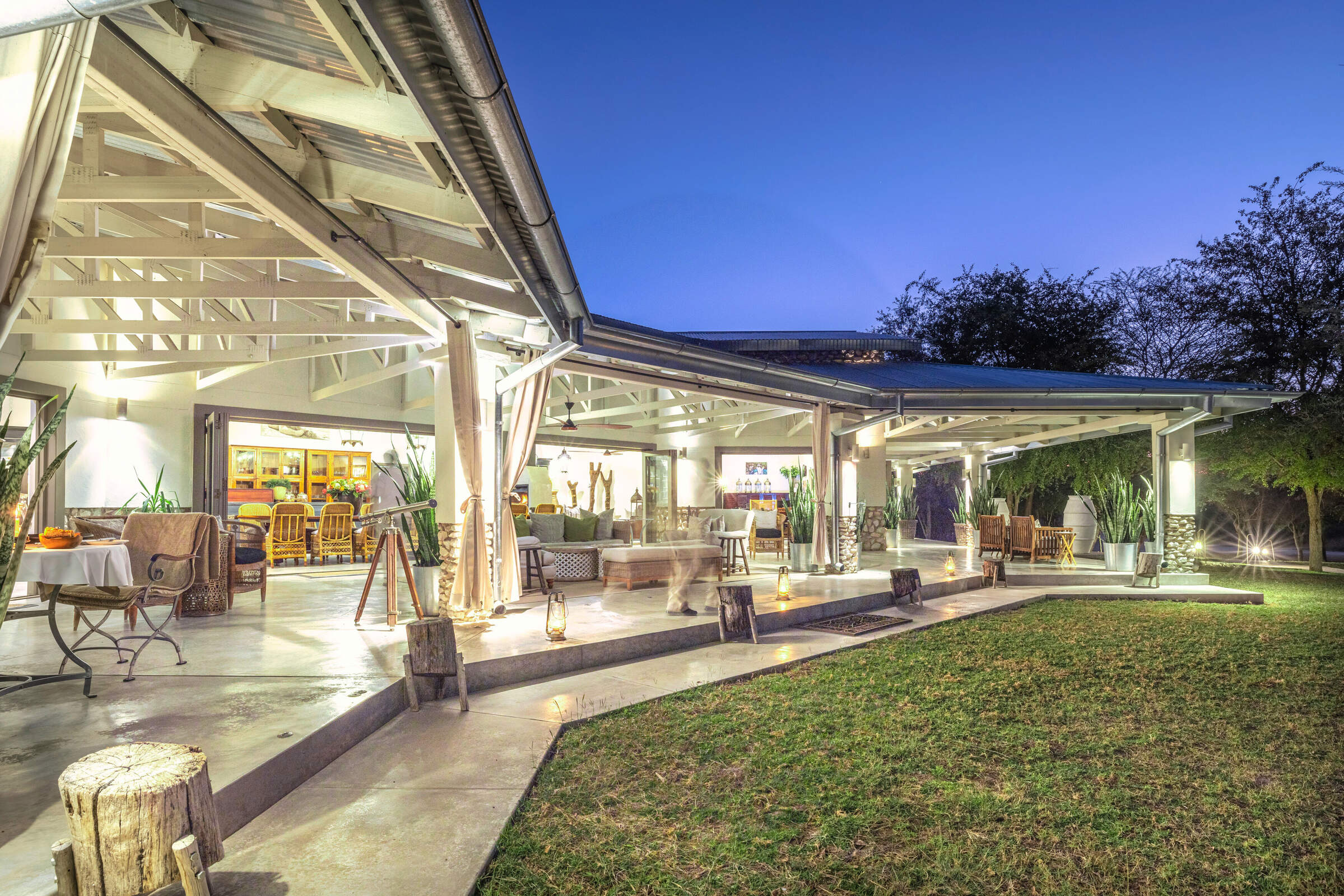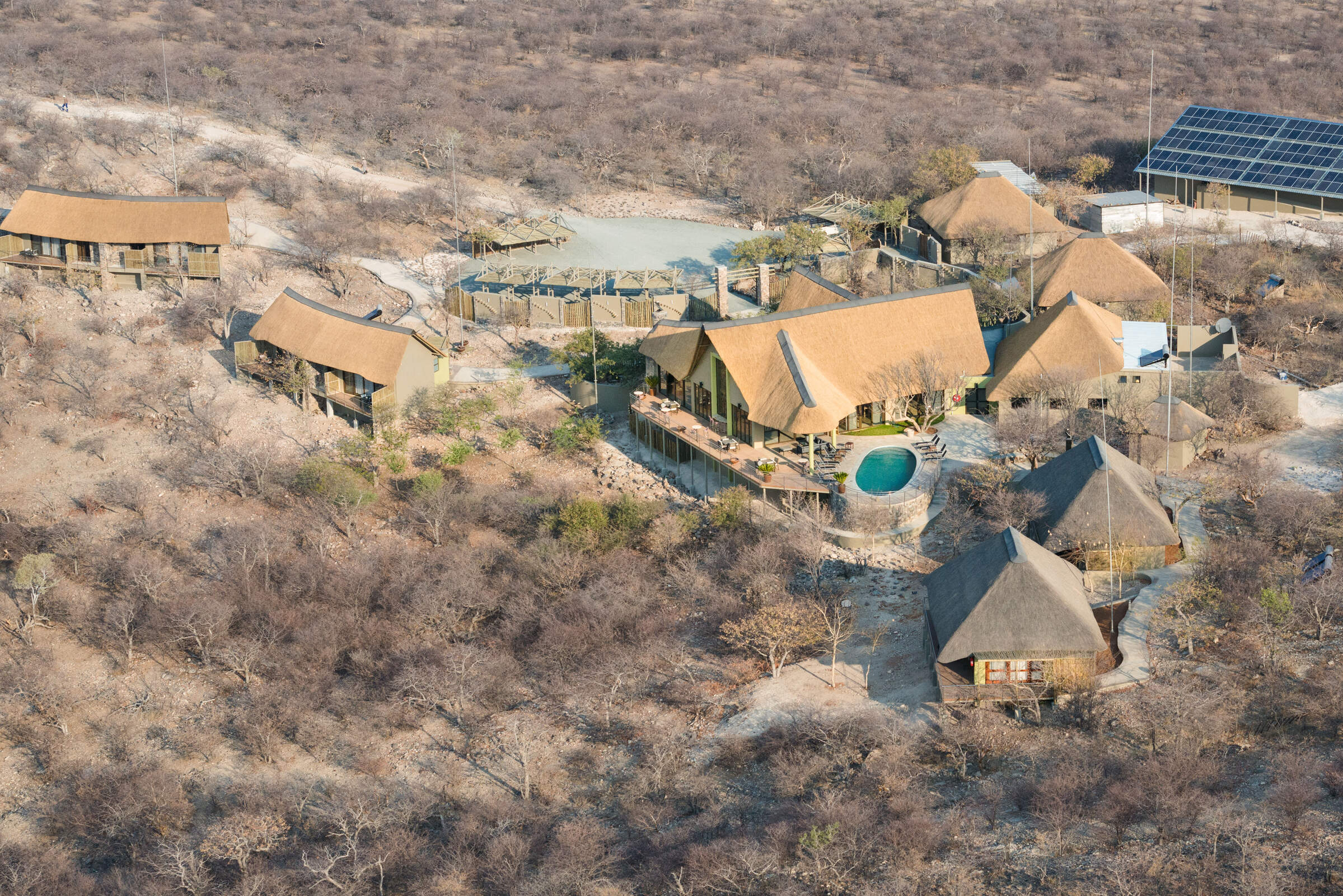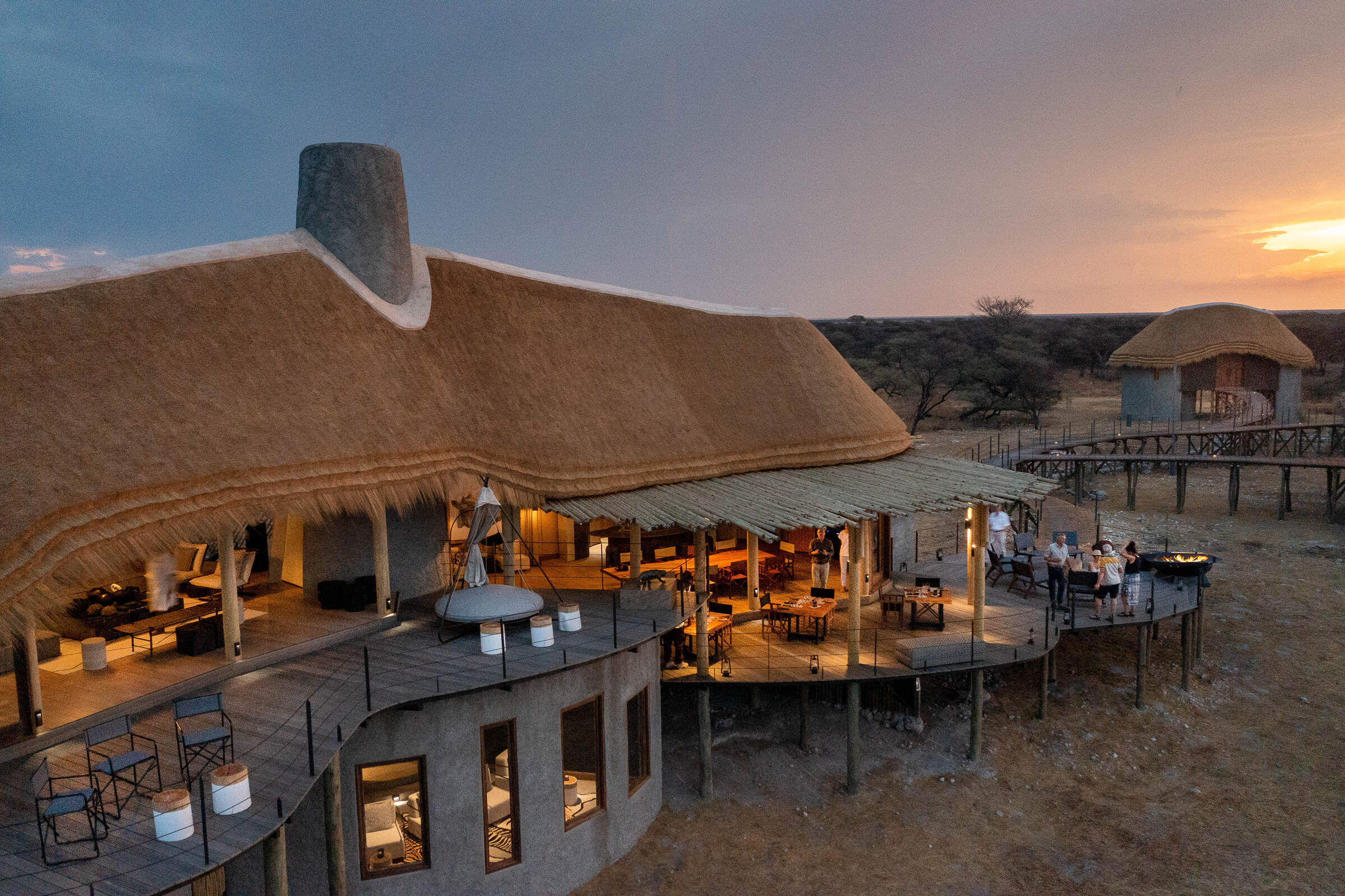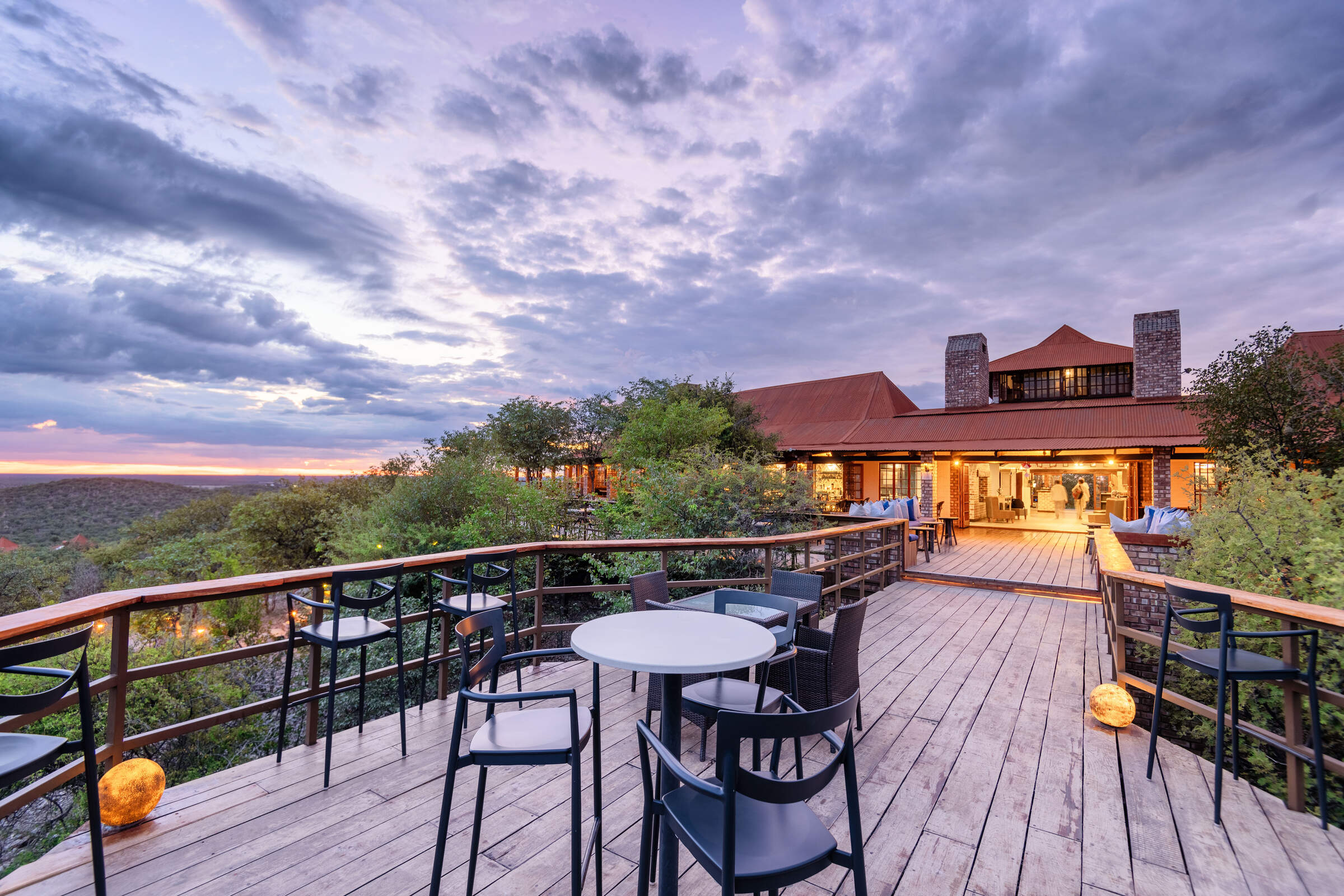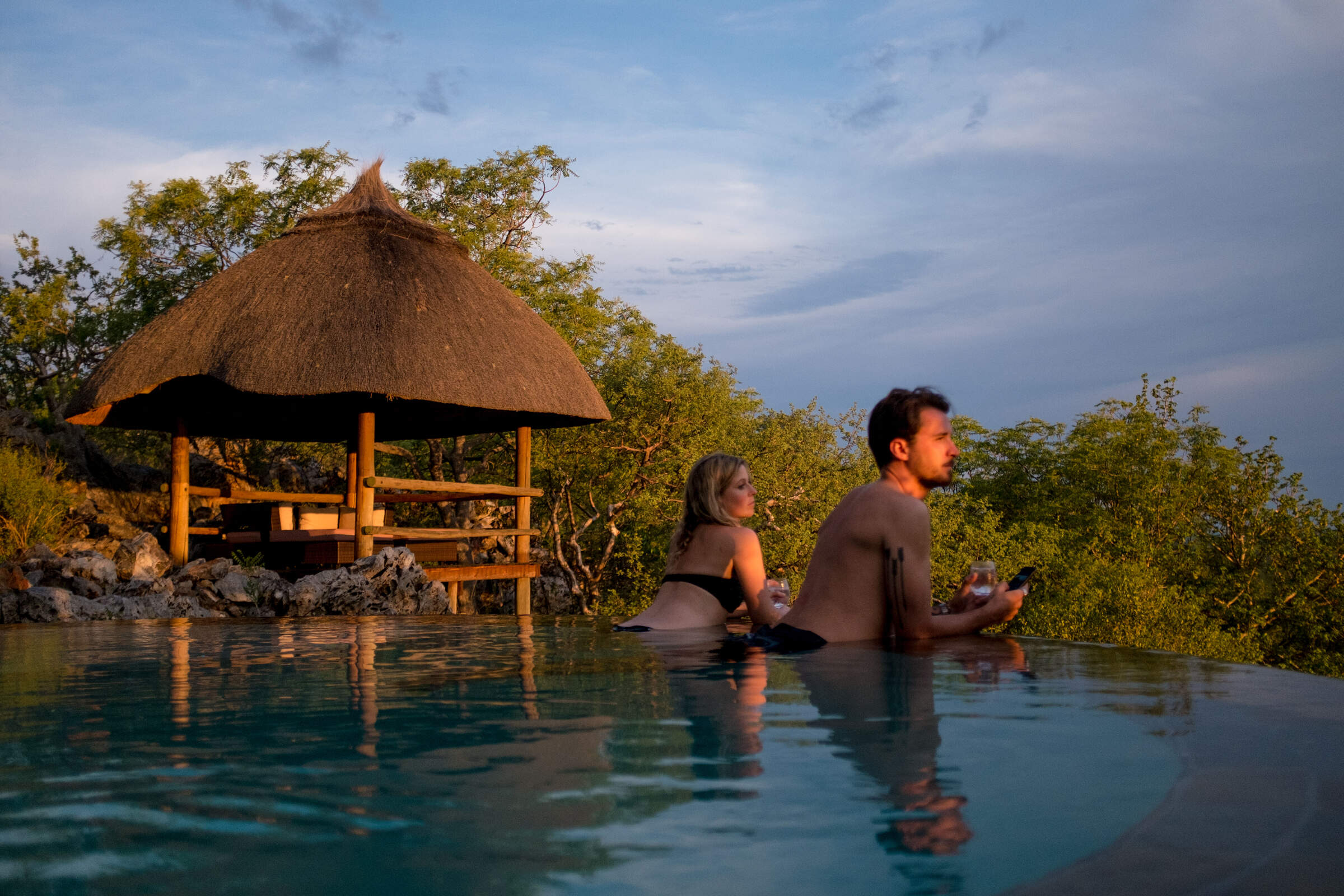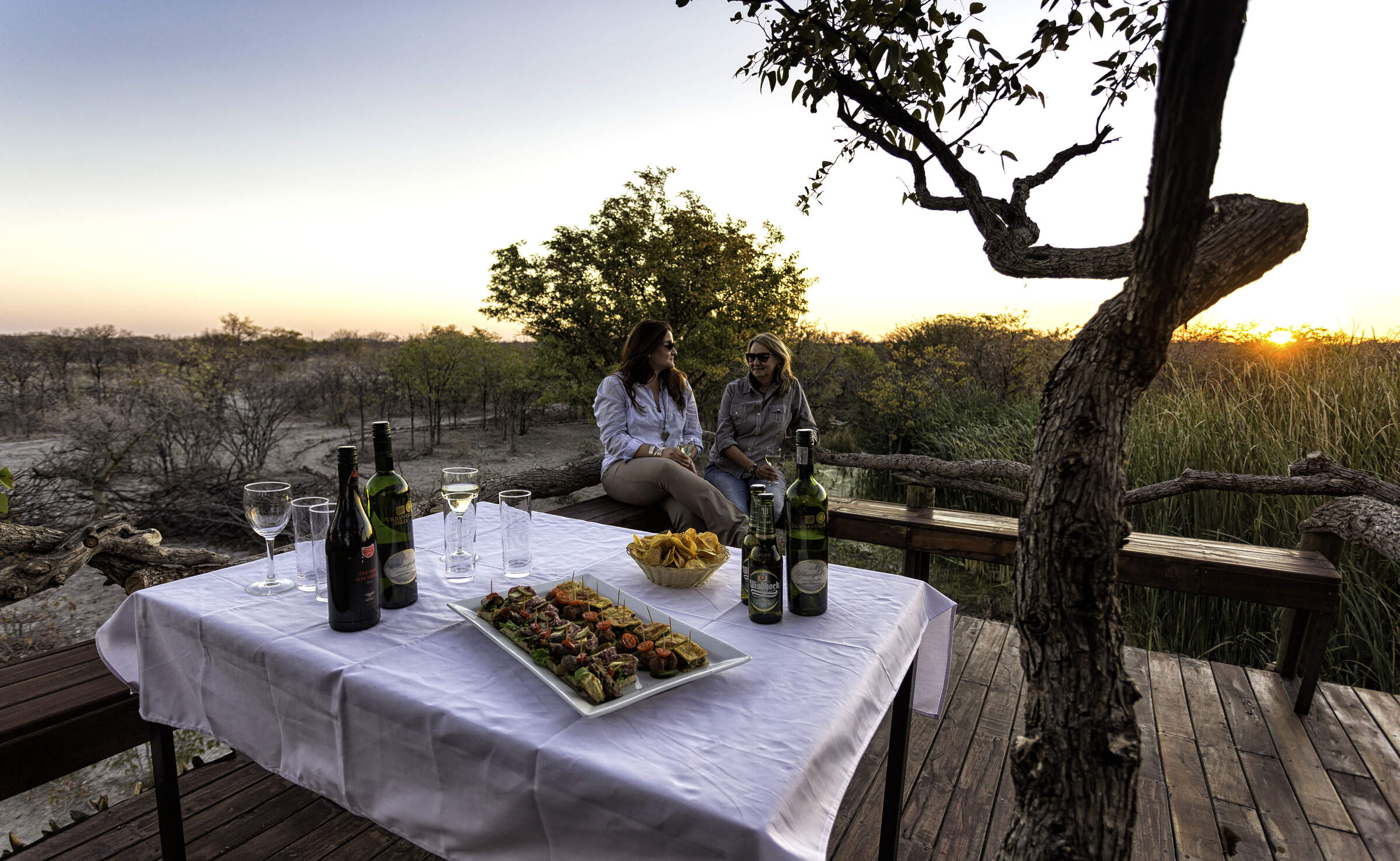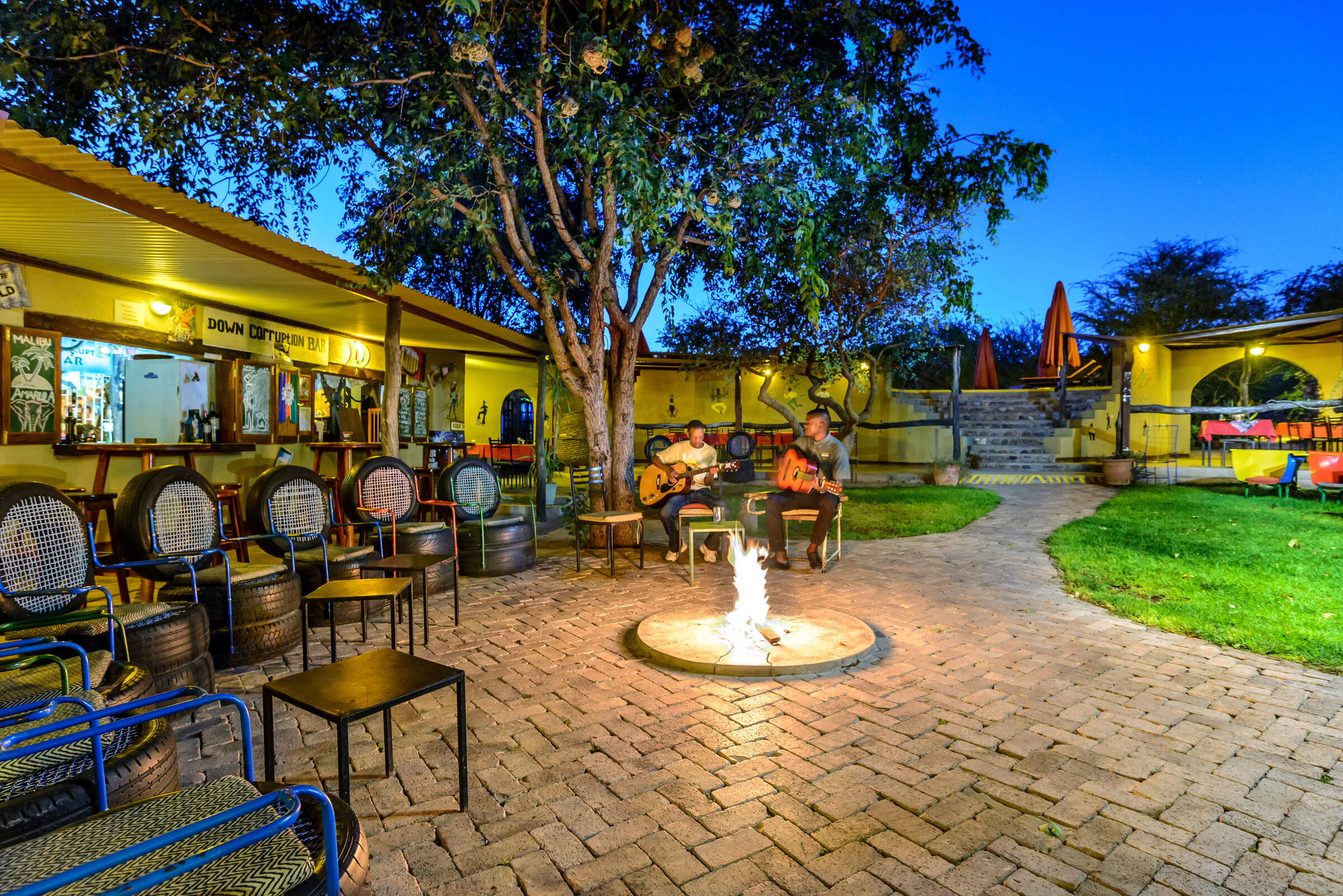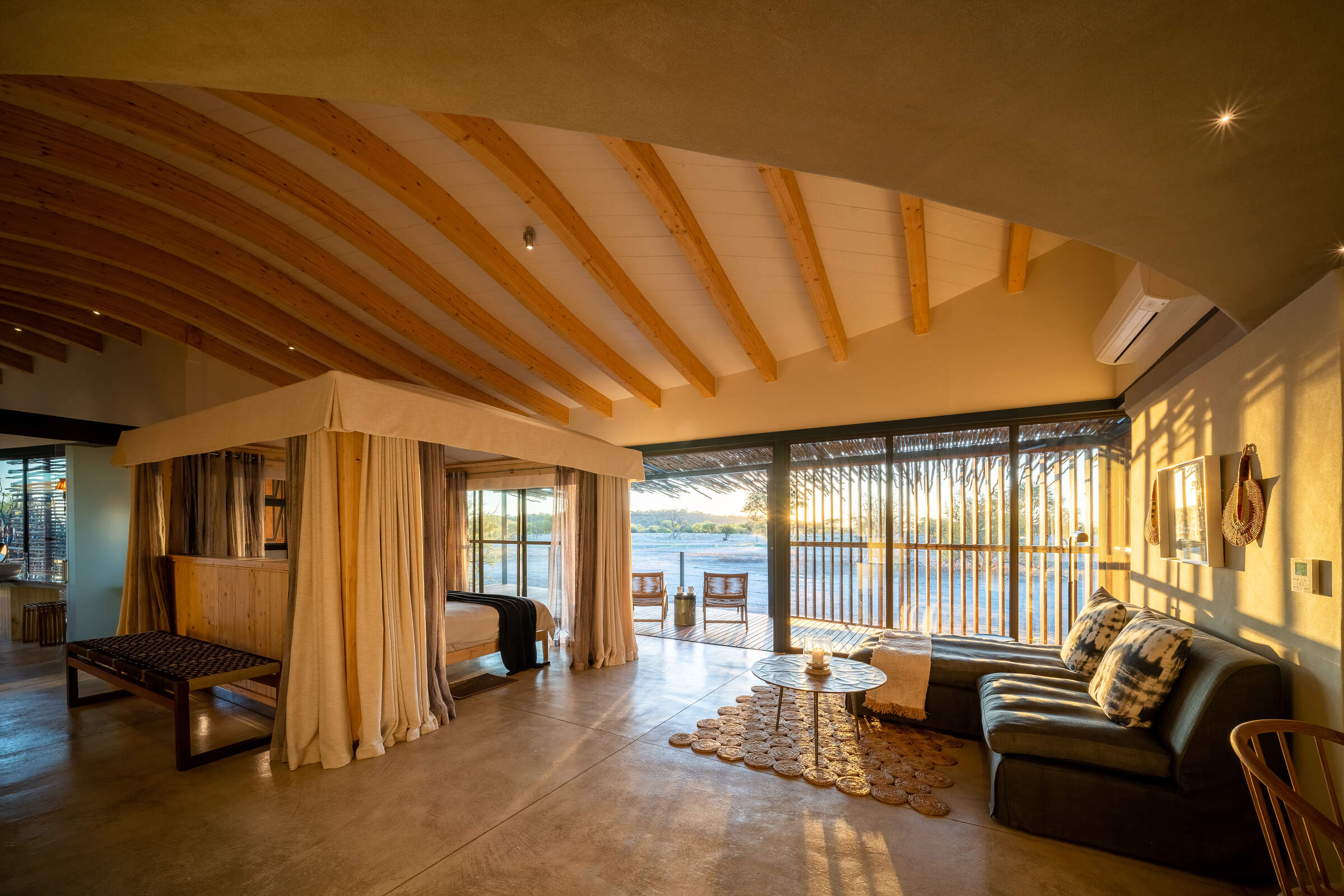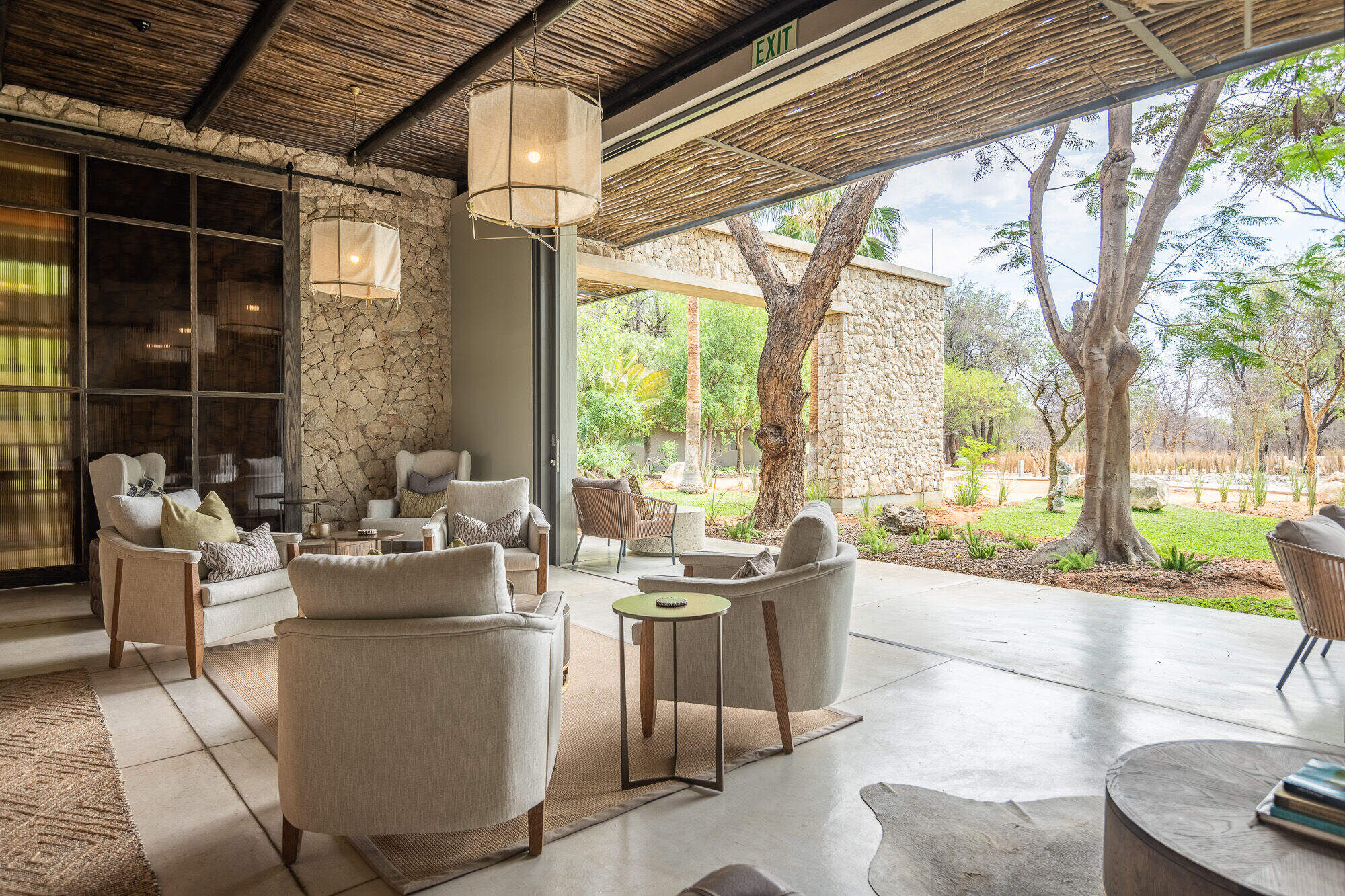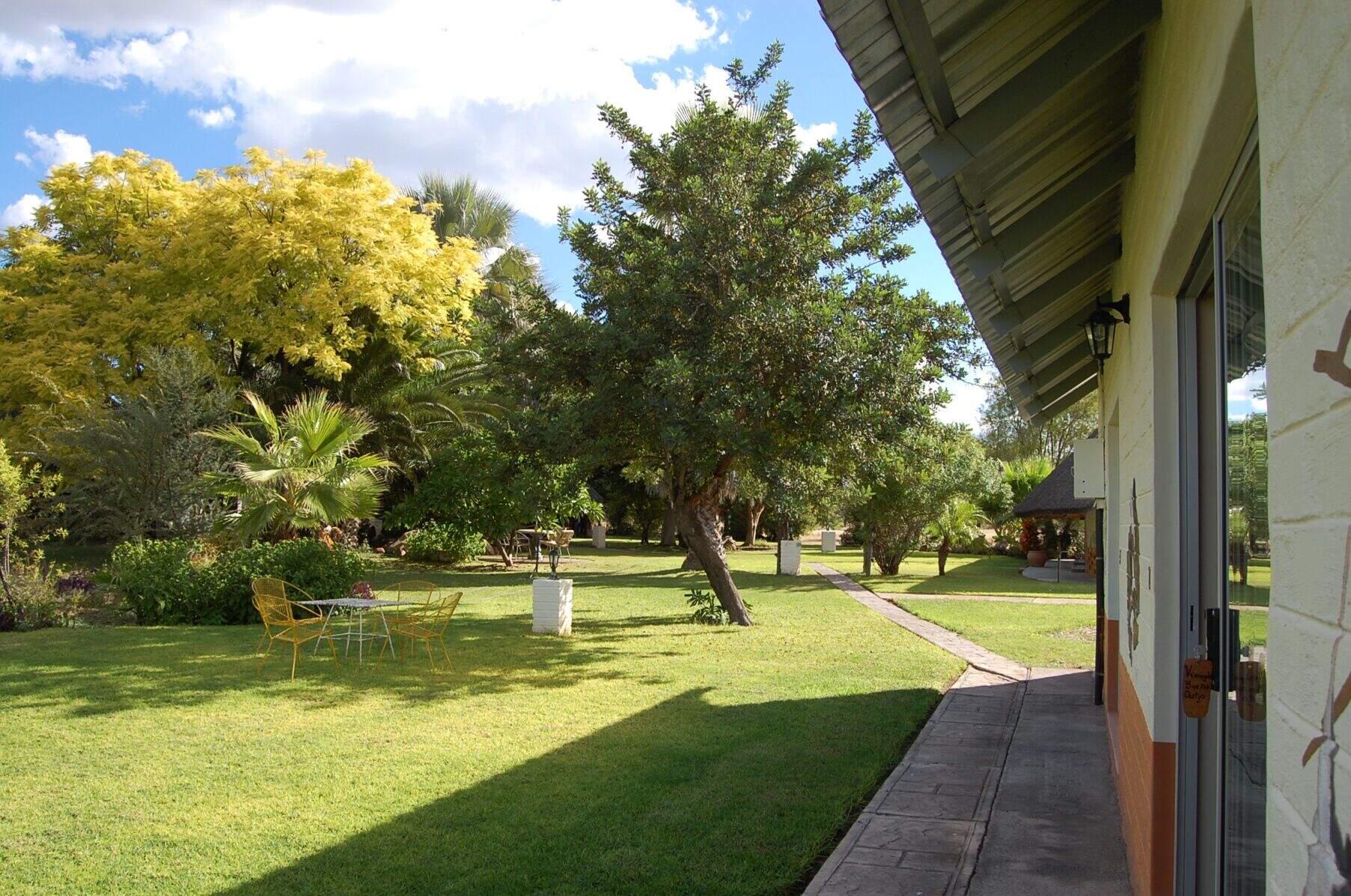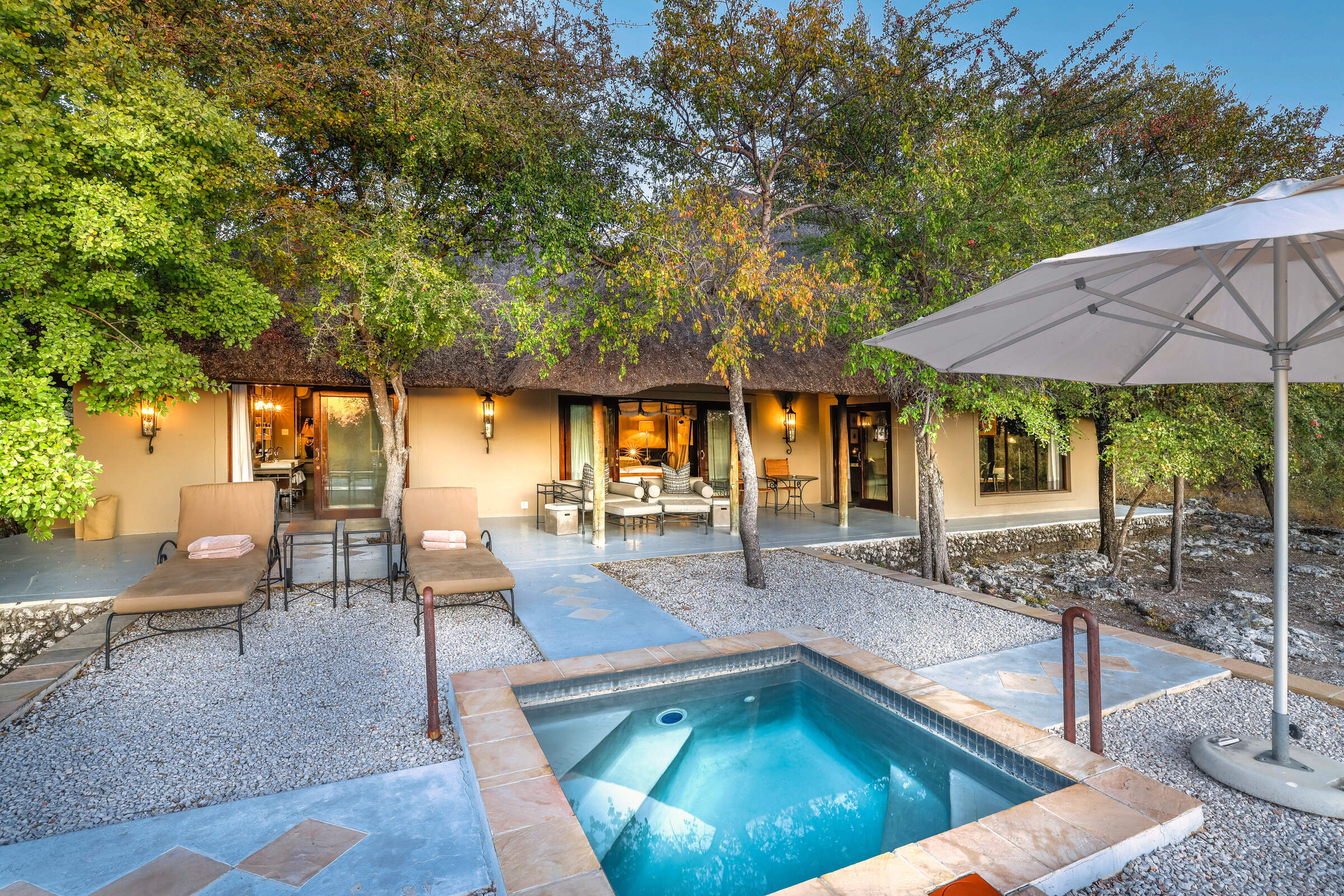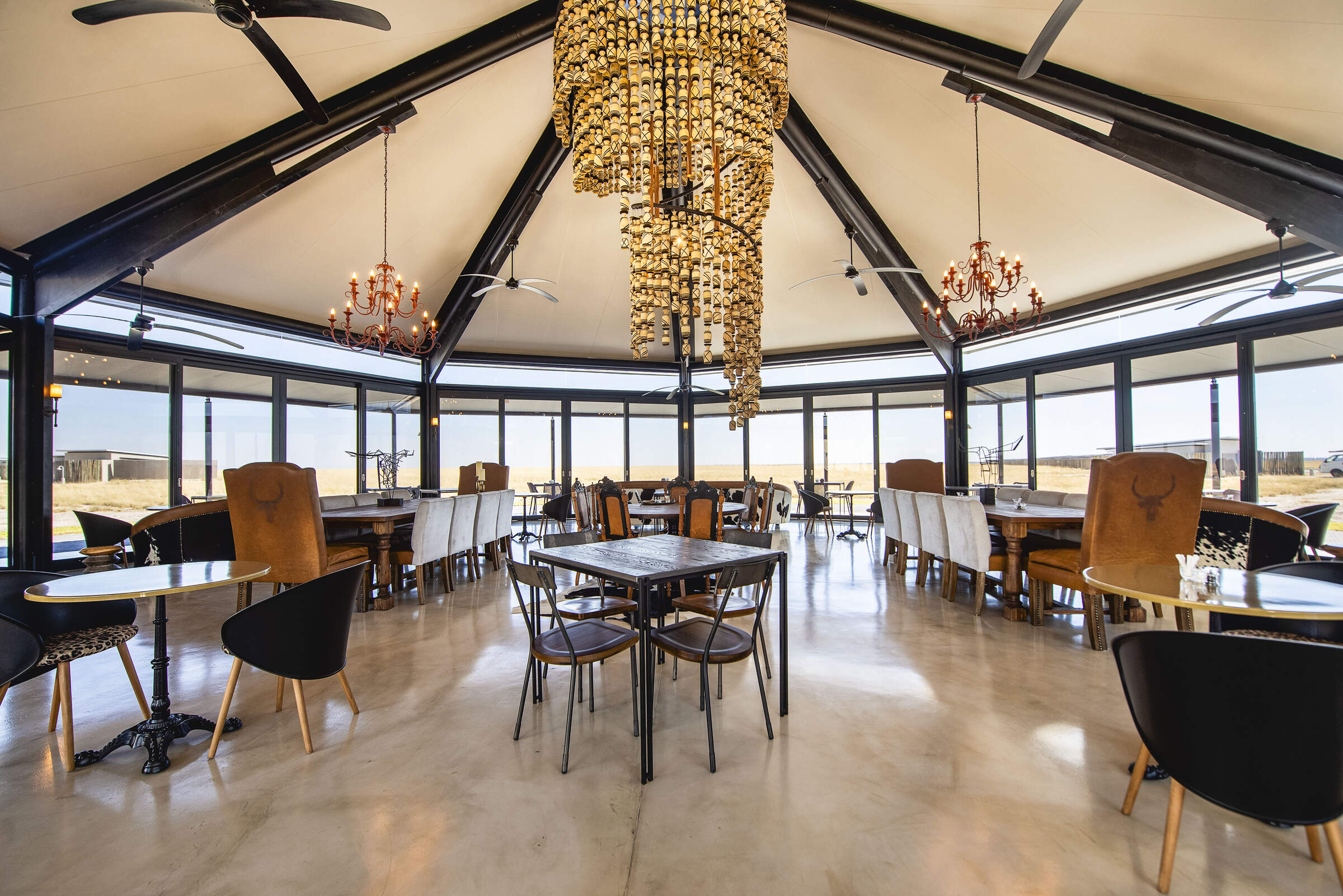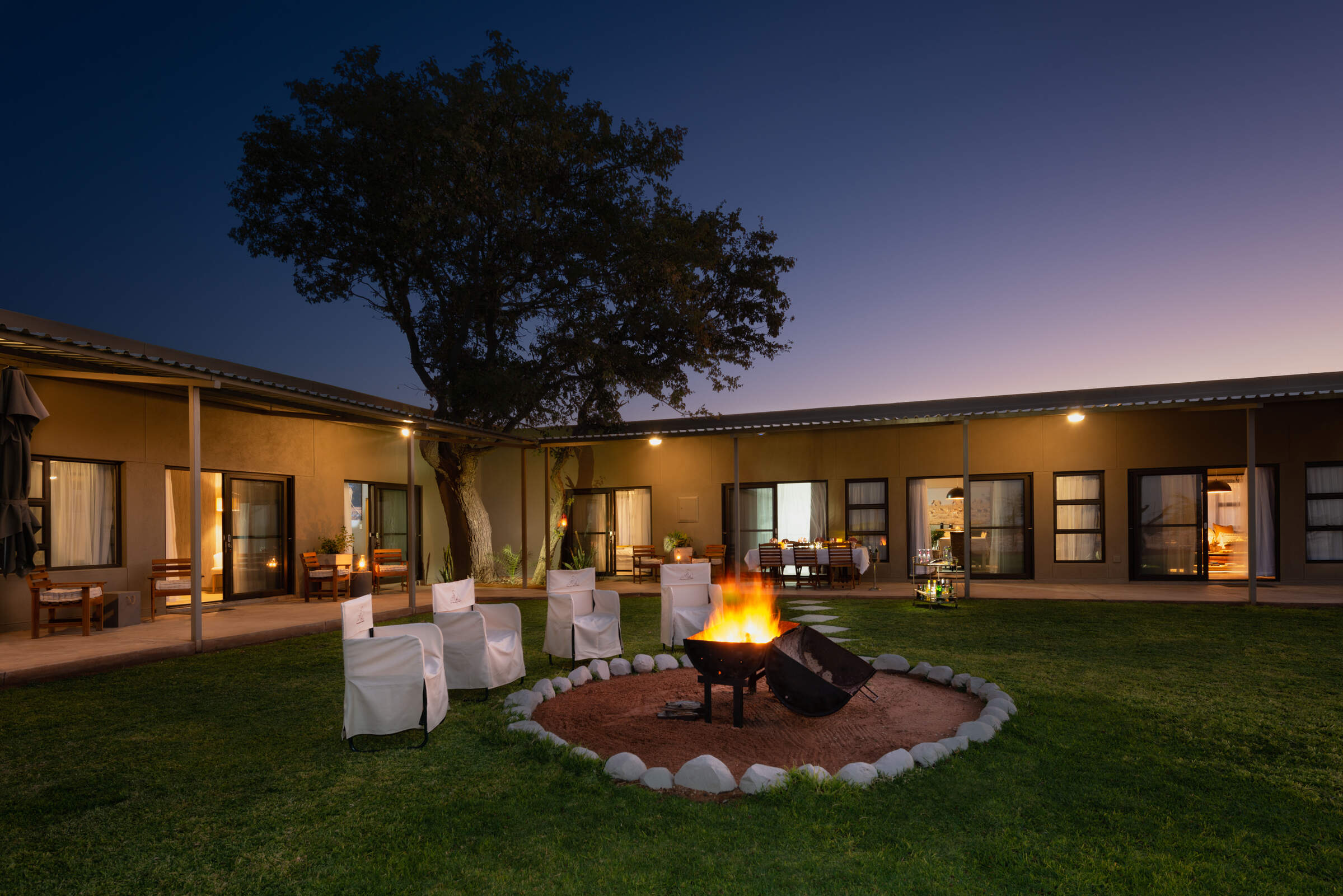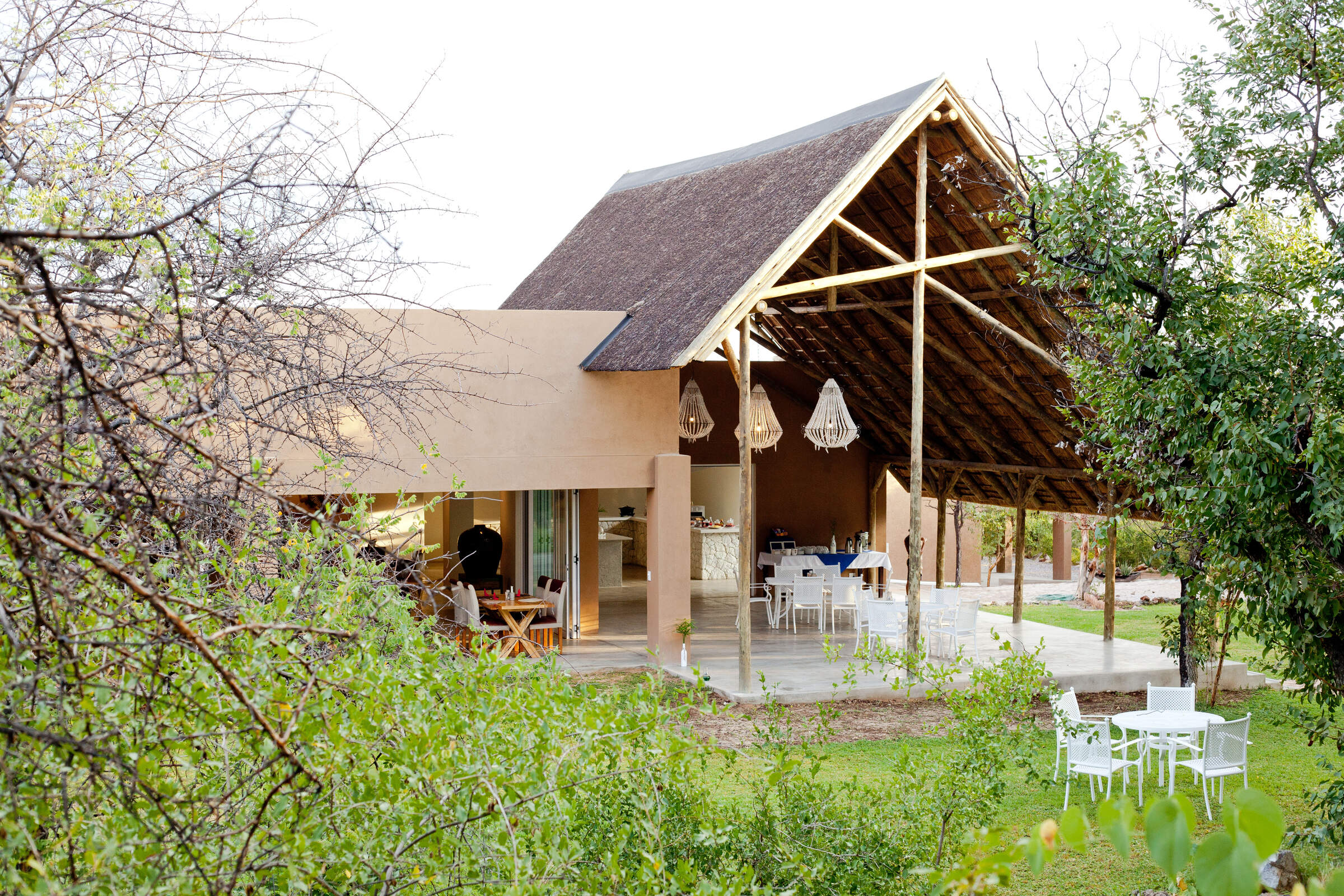About Halali Camp
Boasting a superb location, its own floodlit waterhole and relatively good value, Halali ticks a lot of boxes.
It’s also the smallest of Etosha’s original government restcamps, and quieter too – a big plus when watching animals is the focus of every visitor.
Unique among these restcamps is Halali’s dolomite kopje, which offers the opportunity for a short walk within the camp, something that’s all too rare in this iconic national park.
Dotted among the trees across the otherwise level site are chalets and rooms in various configurations. Functional but clean, all are geared to self-drivers and some come with cooking facilities. If that doesn’t fit into your holiday picture, there’s a restaurant on site too, and the large swimming pool is a strong attraction for families.
Of prime interest to most is Halali’s permanent waterhole, an inviting magnet for black rhino, elephant and plenty of plains game. With a natural setting on the edge of the camp, it’s a peaceful spot to while away an hour or two.
To explore the national park, you’ll need to take to a vehicle – your own or on one of the camp’s game drives. After dark, though, a game drive is your only option, a great opportunity to seek out Etosha’s nocturnal creatures in near isolation.
- Accommodation
- 66 rooms
- Children
- Best for 6+
- Open
- All year
Activities

4WD Safari

Birdwatching

Night drive

Private activities
Safaris visiting Halali Camp
Just ideas, we'll always tailor-make a trip for you

Looking for inspiration on where to travel next?
Visit our trip chooser to explore your options and find inspiration for your perfect African adventure
Inspire meTraveller reviews of Halali Camp
337 real, un-edited reviews from Expert Africa's travellers.








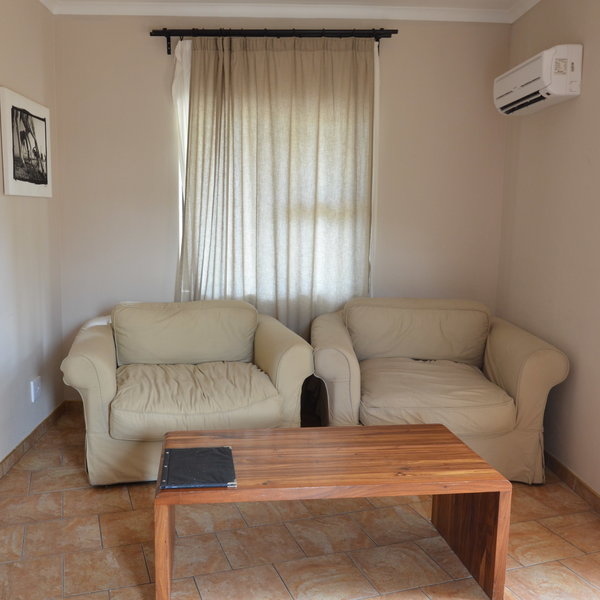








Expert Africa's gallery
When we travel we take lots of photos ourselves to give you a real and un-edited view of the safaris. See our 21 pictures of Halali Camp to get the candid view.
View galleryOur travellers’ wildlife sightings from Halali Camp
Click an animal to see our traveller's success in sighting them.
How we work this out.

98% success

95% success

93% success

93% success

91% success

78% success

76% success

58% success

39% success

33% success

30% success

9% success

6% success

3% success

3% success

0% success

0% success
Halali Camp's location
Look closer at the environment and surroundings of Halali Camp.
When to go to Etosha National Park
Our month by month guide: What it's like to visit Halali Camp in Etosha National Park
Jan
Feb
Mar
Apr
May
Jun
Jul
Aug
Sep
Oct
Nov
Dec
Etosha National Park in January
January marks the start of Etosha's main rainy season. The Etosha Pan, usually a vast expanse of white clay, may partially fill with water in good rainy season, attracting flamingos and other migratory birds. The landscape transforms into a lush green oasis, providing ample food for wildlife. Many animals give birth during this time, offering chances to see newborns.
While game viewing can be challenging due to dispersed wildlife and thick vegetation, birdwatching is excellent. Migratory species arrive and birds display breeding plumage. The Okaukuejo and Halali waterholes remain active, though less crowded than in dry months. Visitors should be prepared for occasional thunderstorms and potentially muddy roads, especially around Fischer's Pan.
The vibrant greenery and the presence of young animals make this a fantastic time for photography.
- Variable weather: hot, dry or humid with rain
- Occasional localised thunderstorms in Etosha
- Many animals with young; spectacular birdlife
- Wildlife dispersed, harder to see in Etosha
- Fewer tourists; low rates at most lodges
Our view
This is not a great time to visit
Weather in January
Etosha National Park in February
February is typically Etosha's wettest month. The Etosha Pan may be partially filled, creating a spectacular sight and attracting numerous waterbirds, including flamingos. The landscape is vibrantly green, with many animals raising their young.
While game viewing can be more challenging due to the abundance of water and vegetation, patient observers can spot a variety of wildlife, and share their sightings with fewer other visitors. Birdwatching is excellent, with many species in breeding plumage. The Fairy Tale Forest near Okaukuejo is particularly lush during this time.
Visitors should be prepared for occasional thunderstorms and potentially challenging road conditions, especially in the eastern part of the park. The lush environment and the presence of young animals provide a unique opportunity to witness the park's life cycle.
- Variable weather with occasional thunderstorms
- Bush feels alive; birdlife at its peak in Etosha
- Wildlife in Etosha dispersed, harder to spot
- A variety of newborn and young wildlife to see
- Few tourists; lowest rates for accommodations
Our view
This is not a great time to visit
Weather in February
Etosha National Park in March
As Etosha's main rains taper off, March offers a mix of wet and dry days. The landscape remains green and alive, with insects and smaller animals more easily seen, and many birds and animals are finishing raising their young.
The Etosha Pan may still hold some water, attracting flamingos and other waterbirds. Game viewing improves as the month progresses and animals start to herd together at permanent water sources. The Okaukuejo, Halali, and Namutoni waterholes become increasingly active.
Birdwatching remains excellent, with many migrant species still around. The Dolomite Camp area in the west offers good chances to spot rarer antelope species like black-faced impala.
The transition from wet to dry conditions provides a fascinating glimpse into the park's seasonal changes.
- Weather variable; thunderstorms less frequent
- Animals well-fed after months of abundance
- Wildlife in Etosha still dispersed, harder to see
- Migrant birds prepare to leave the park
- Few visitors; rates often low at Etosha lodges
Our view
A good time to visit, with pros & cons
Weather in March
Etosha National Park in April
April typically sees dry weather dominating in Etosha, with decreasing chances of rain. The landscape remains relatively green, and animals are in excellent condition with shiny coats. Increasing numbers of elephants seen as the herds begin to use the permanent water sources. The Okaukuejo waterhole becomes particularly active, especially in the evenings.
Photographers benefit from clear air and lush, green backdrop. Night drives from camps like Halali offer chances to see nocturnal animals. Birdwatching remains good, though some migratory species begin to depart, and the Fischer's Pan area can still be productive for waterbirds if there's residual water from the rainy season.
The shift towards drier conditions improves the chances of wildlife sightings.
- Becoming drier and cooler, especially at night
- Few visitors except around Easter; low rates
- Wildlife in Etosha still relatively spread out
- Migrant birds have largely left the park
- Fresh air and often green landscapes in Etosha
Our view
A good time to visit, with pros & cons
Weather in April
Etosha National Park in May
May marks the transition to Etosha's dry season. The landscape starts to dry out, but may still retain some greenery. Wildlife increasingly gathers around permanent water sources, making game viewing more predictable. The Okaukuejo, Halali, and Namutoni waterholes become excellent spots for animal observation – especially when floodlit after dark. Night drives offer opportunities to see nocturnal species like leopards and owls.
The Etosha Pan is usually dry, creating a stark, shimmering backdrop for photography. Birdwatching remains good, with 340 different species recorded in the park. The western part of the park, accessible from Dolomite Camp, offers chances to see rarer species like black rhino in a less frequently explored environment. The dry season's onset brings a new rhythm to the park's wildlife dynamics.
- Lovely weather: dry, warm days & cool nights
- Etosha drying out; landscapes still partly green
- Fantastic air clarity; ideal for photography
- Visitor numbers low; lodge rates still low
- Wildlife starting to gather at Etosha waterholes
Our view
A very good time to visit
Weather in May
Etosha National Park in June
June brings cooler temperatures with clear skies to Etosha. The landscape is drying out, encouraging animals like elephants, rhino and giraffe to waterholes. This makes for excellent game viewing, especially at popular spots like Okaukuejo and Halali. Night drives on private Etosha reserves, like Ongava, are particularly productive.
The dry Etosha Pan creates mirages and a unique backdrop for photography, perhaps a lone ostrich crossing the stark salt crust. Birdwatching remains rewarding, with bright colours standing out in drier vegetation. The Namutoni area, with its fort, provides a mix of wildlife viewing and historical interest.
Cooler temperatures making walking safaris enjoyable in Etosha’s adjacent wildlife reserves, like Etosha Heights.
- Clear days, cold nights in Etosha National Park
- Great air quality; perfect for photographers
- Moderate lodge rates; shoulder season begins
- Wildlife gravitates to Etosha's waterholes
- Some greenery remains in parts of the park
Our view
A very good time to visit
Weather in June
Etosha National Park in July
July is prime time for wildlife viewing in Etosha as animals, in particular predators, are more active later in cool mornings and earlier in the afternoons. The dry landscape concentrates animals around waterholes, making for predictable and spectacular sightings. The Okaukuejo waterhole is particularly active, especially at night when black rhinos often visit and jostle for position with elephants.
The stark white Etosha Pan creates a unique backdrop for photography, with heat mirages shimmering on the horizon.
The dry season's peak offers unparalleled wildlife viewing opportunities. Game drives along the southern edge of the pan offer excellent opportunities to see large herds of zebra, wildebeest, and antelope. Birdwatching is rewarding around waterholes, with species like eagles and vultures frequently sighted.
- Dry days, crisp nights; excellent for stargazing
- European holidays begin; more families visit
- Peak season; high rates, lodges often full
- Fantastic wildlife watching
- Animals concentrate around Etosha waterholes
Our view
A very good time to visit
Weather in July
Etosha National Park in August
August is the height of the dry season in Etosha, offering excellent wildlife viewing opportunities. Animals concentrate around waterholes, with a variety of predators and prey often seen at any one time. Night viewing at the more secluded yet floodlit waterhole at Halali is often rewarded with sightings of shyer leopard and porcupine.
The dry season's intensity brings wildlife into sharp focus. The open plains along the edge of the Etosha Pan are good for seeing large herds of zebra and wildebeest, and often cheetah too. Predators often lie in wait for their prey near waterholes offering sightings of hunts to patient game viewers.
Birdwatching remains rewarding, with raptors like bateleur and martial eagles frequently sighted.
- Dry days, cold nights; clear skies in Etosha
- Busy by Namibian standards; family rooms full
- Peak season; high rates, advanced booking needed
- Excellent wildlife viewing in Etosha National Park
- Large herds gather at Etosha's waterholes
Our view
Fantastic: the very best time to visit
Weather in August
Etosha National Park in September
September offers peak wildlife viewing in Etosha. The extreme dry conditions concentrate animals around waterholes, making for spectacular sightings of multiple species. The Okaukuejo waterhole is particularly active, with elephants, rhinos, and lions frequently visiting.
The last months of the dry season showcases the park's wildlife at its most concentrated. The stark landscape of the dry Etosha Pan creates dramatic backdrops for photography. Game drives along the pan's edge offer chances to see large herds of zebra, springbok, and oryx as well as lion prides and cheetah. The western part of the park, accessible from Dolomite Camp, often provides a more exclusive safari experience with good rhino sightings. Night drives on adjacent private reserves like Hobatere offer opportunities to see nocturnal animals such as genets and aardwolves.
Birdwatching is excellent, with species standing out clearly in the sparse vegetation.
- One of the best months for Etosha wildlife viewing
- Warm days, cold nights; temperatures rising
- Colourful birds stand out against a starker backdrop
- Etosha's waterholes teem with diverse wildlife
- High season; book Etosha accommodations early
Our view
Fantastic: the very best time to visit
Weather in September
Etosha National Park in October
October is typically Etosha's hottest and driest month, offering excellent wildlife viewing. The intense heat and dry conditions heighten the drama of wildlife interactions.
Animals concentrate heavily around waterholes, with spectacular sightings common at Okaukuejo, Halali, and other permanent water sources. Patient photographers spending time at waterholes are richly rewarded. Large herds of zebra, wildebeest, and various antelope species can be seen along the pan's southern edge. Predator sightings, including lions and cheetahs, are frequent as they target gathered and weakened prey. Thinning vegetation at Namutoni makes it easier to spot the dimunitive Damara dik dik – Namibia’s smallest antelope.
Birdwatching remains rewarding, with raptors and colourful rollers often spotted.
- Peak wildlife-viewing month in Etosha National Park
- Hot and dry; Etosha feels like a desert
- Air can be hazy with dust in some areas
- Peak time; expect high season rates in Etosha
- Etosha lodges often full, especially early October
Our view
A very good time to visit
Weather in October
Etosha National Park in November
November marks the transition to Etosha's rainy season, bringing change to the landscape and wildlife behaviour. Early rains may green the vegetation, dispersing some wildlife from waterholes. However, game viewing remains good, especially around permanent water sources like Okaukuejo and Halali’s floodlit waterholes.
The first rains can create dramatic scenes as animals celebrate the water's arrival, with plains game often giving birth. Predators often give birth at this time too, to coincide with the time of plenty. Migratory birds begin to return, and birds take to the skies in spectacular aerial shows as they catch more active insects.
Seasonal wildflowers and dramatic, thundery skies add interest to photographic compositions. Summer rains bring reptiles such as tortoises and chameleons out into the open. The onset of rains brings a refreshing change to the park's ecosystem.
- Variable month in Etosha, depending on rains
- If rain comes, explosion of vegetation and life
- Baby animals often born around mid-month
- Shoulder season; mid-range rates offer value
- Showers more likely later in the month in Etosha
Our view
A good time to visit, with pros & cons
Weather in November
Etosha National Park in December
December is often a drier month before January sees the main rainy season begin. The landscape begins to show green from November's rain and the odd rainshower in December. Many animals have young, so there’s the chance to watch frolicking calfs and lambs.
The combination of rainfall and sunshine rejuvenates the park's landscapes and wildlife. While wildlife disperses away from the waterholes with increased water availability, game viewing remains good, especially on the open plains along the southern edge of Etosha Pan. Birdwatching is excellent, with many species in breeding plumage and displaying for mates as well as migrant species arriving.
Visitors should be prepared for occasional thunderstorms and potentially muddy roads, especially in the eastern part of the park.
- Hot, sometimes humid with cooling showers
- Landscapes green where rain has fallen in Etosha
- New life and energy in the park's ecosystem
- Excellent for birdwatchers in Etosha
- Larger animals may be harder to spot
Our view
This is not a great time to visit
Weather in December
Other areas in Namibia
Namibia fact file
Useful information and advice to help you prepare for a trip including Halali Camp
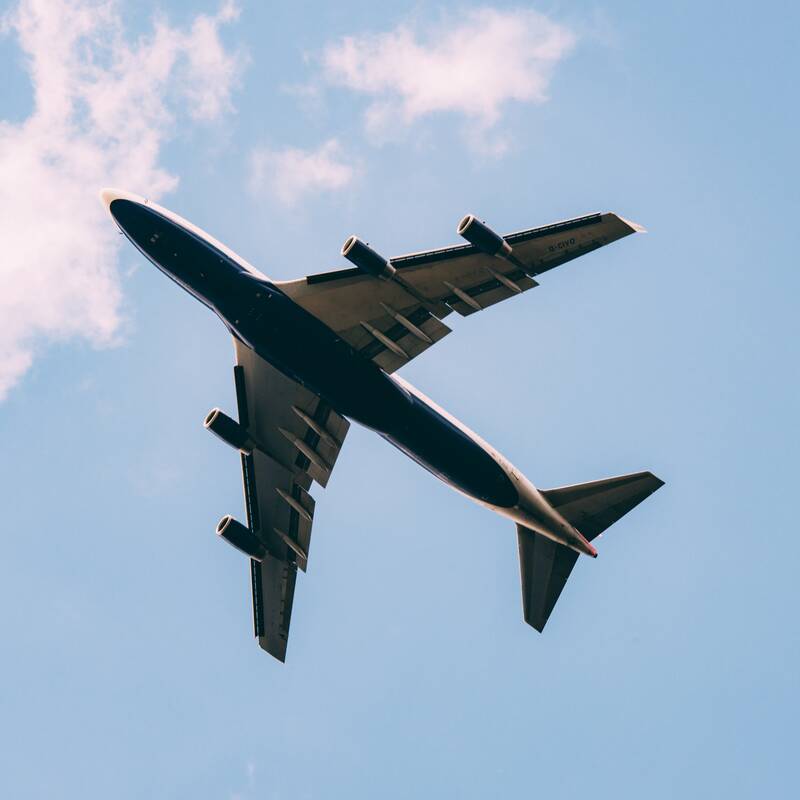
Flights to Namibia
Advice on how to get to Namibia
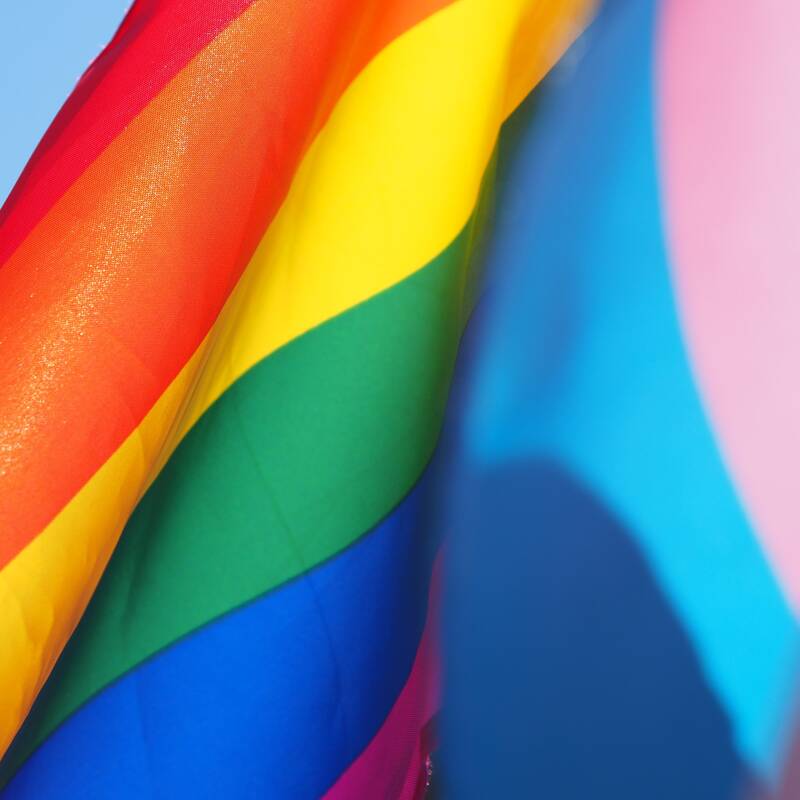
LGBT travel in Namibia
Attitudes, the law & our experiences

Namibia general info
Essential travel info on Namibia
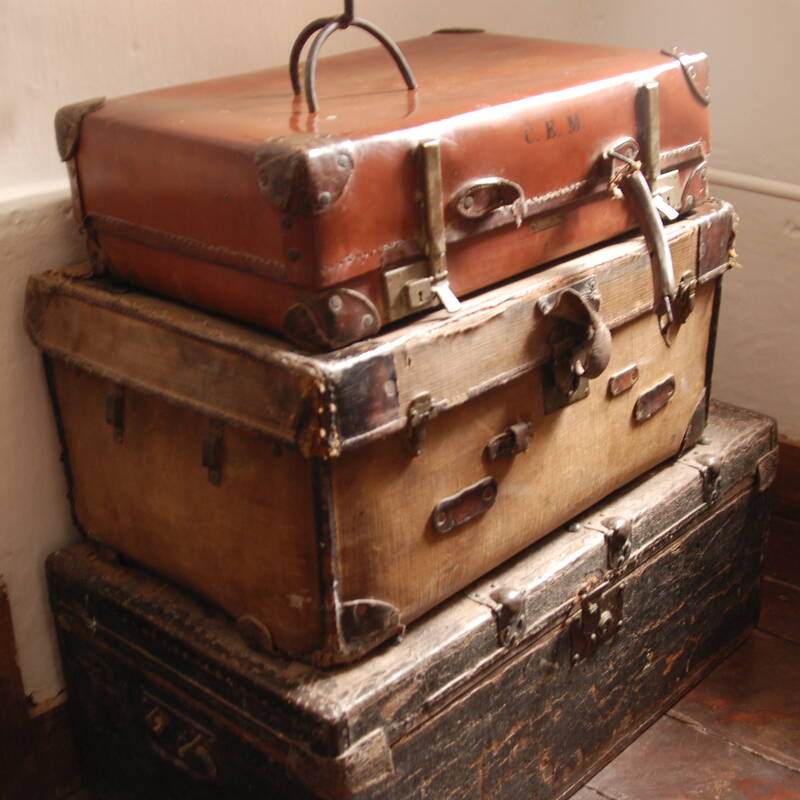
Namibia safari packing list
Advice and tips on what to take to pack

Self-drive - car types
Which car type to rent
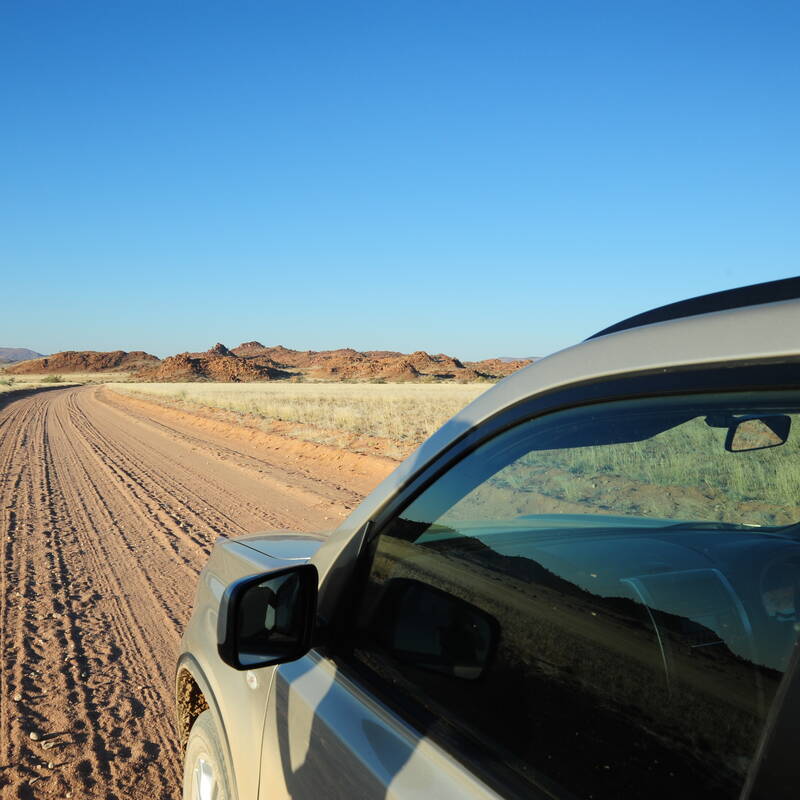
Self-drive - driving tips
Tips to make driving in Namibia easier
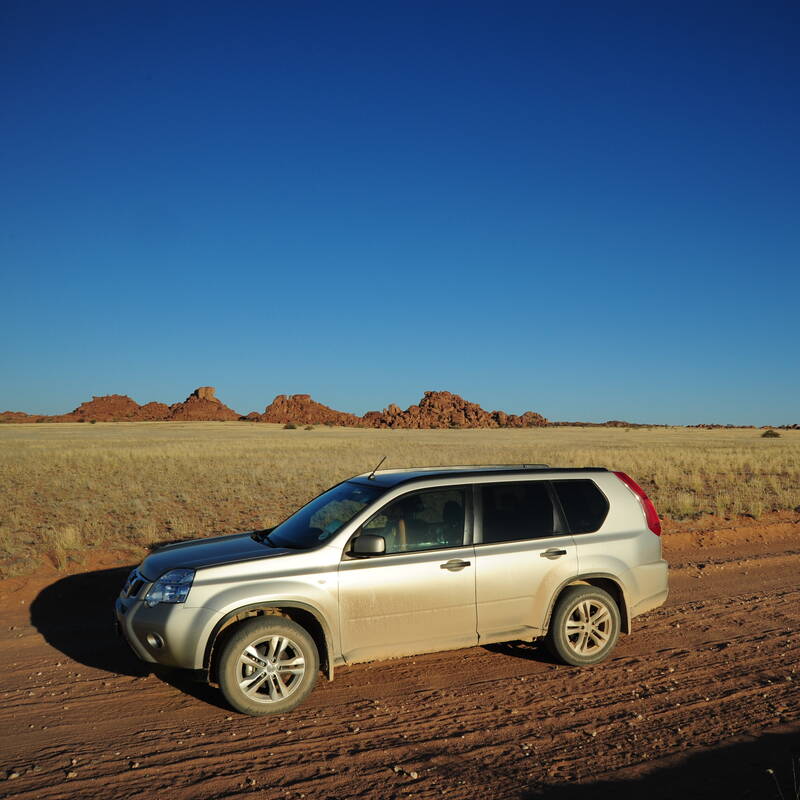
Self-drive - hire groups
The different car hire group to rent
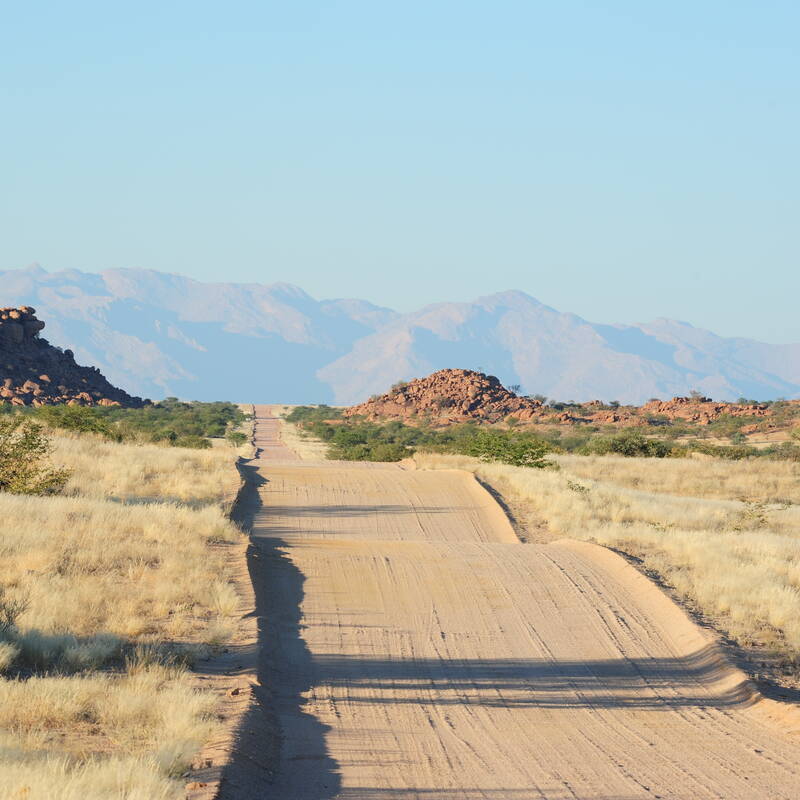
Self-drive - road types
Including pictures & descriptions of roads
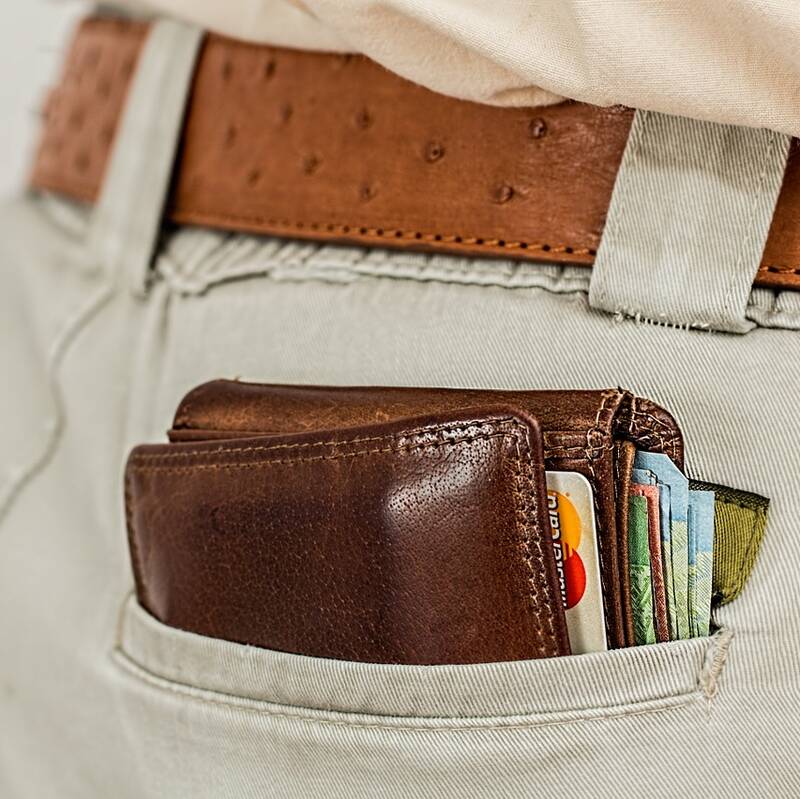
Tipping in Namibia
Expectations & guidelines for tipping
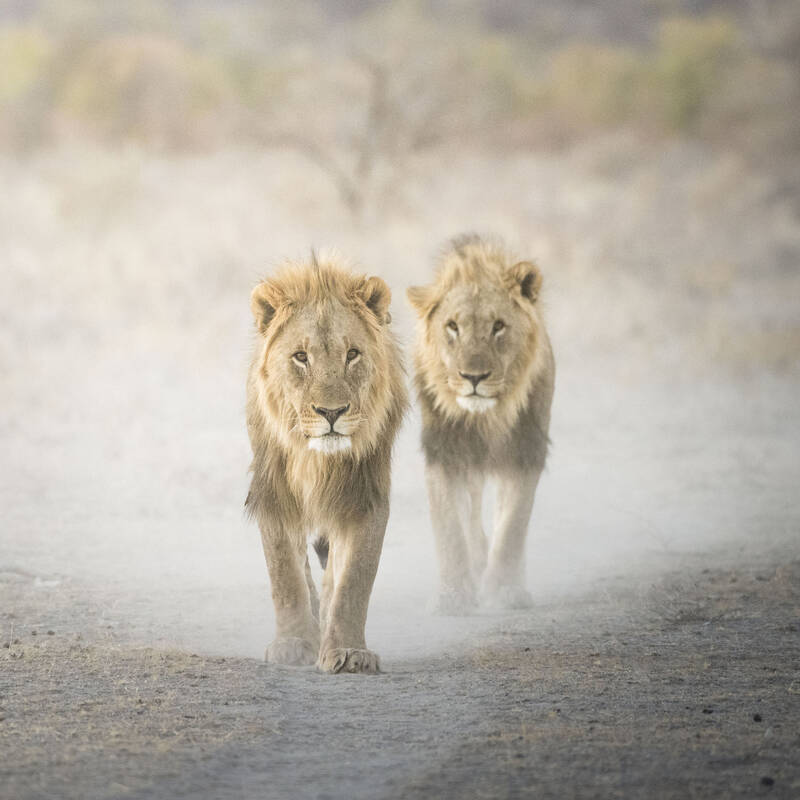
Wildlife - cats & dogs
Including cheetah, lion, leopard, jackal & hyena
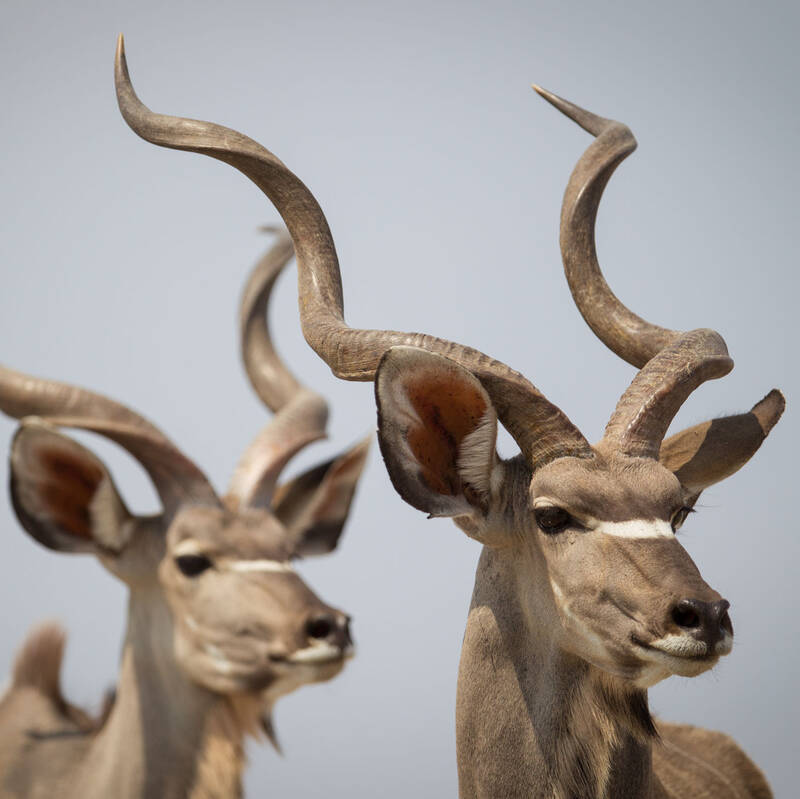
Wildlife - large antelope
Including sable, eland & blue wildebeest
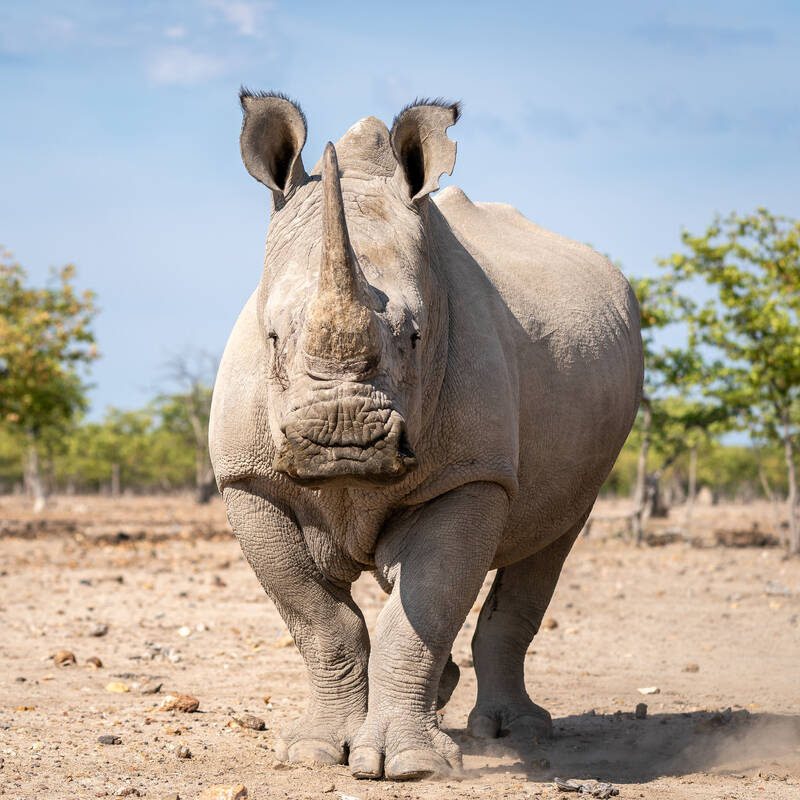
Wildlife - large herbivores
Including elephant & black rhinos
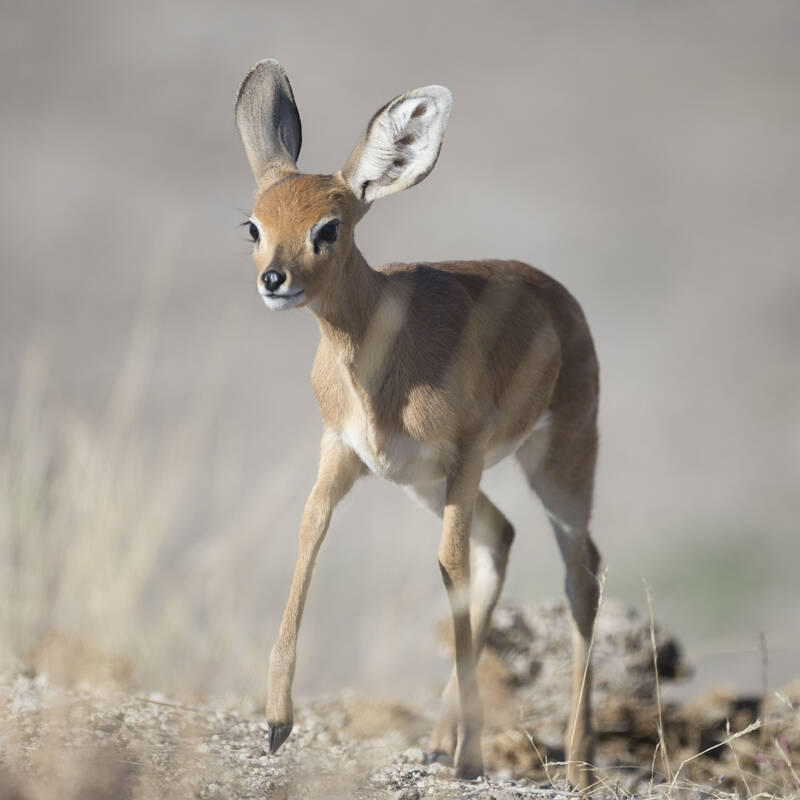
Wildlife - smaller antelope
Including klipspringer & common duiker
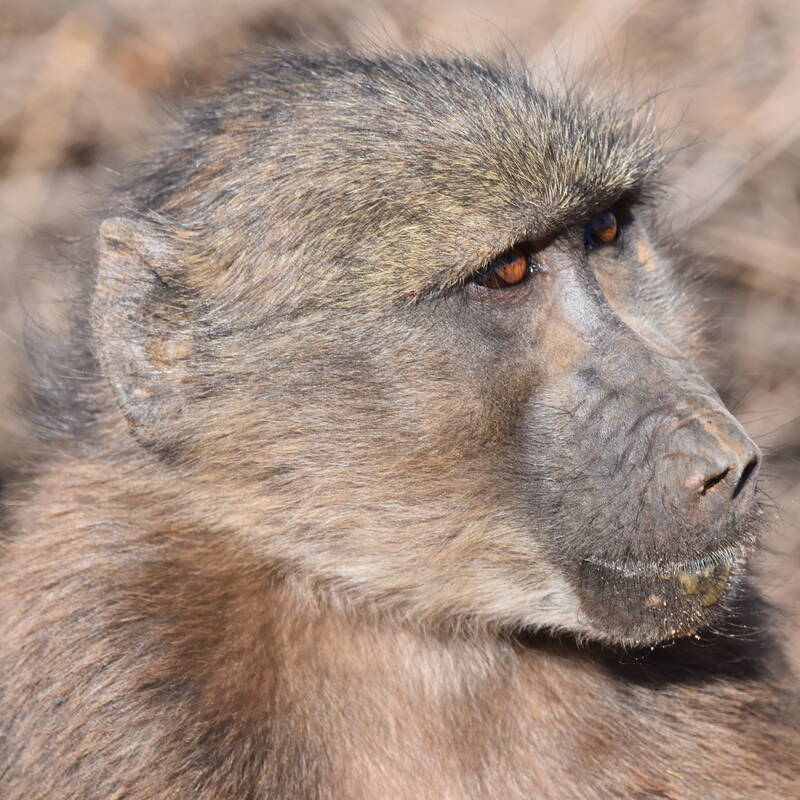
Wildlife - primates
including Chacma baboon & Lesser bushbaby

Wildlife - small mammals
Including banded mongoose & pangolin
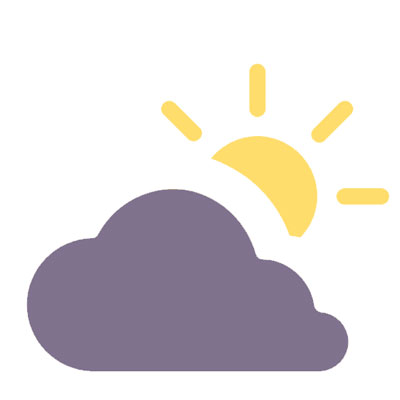
Weather & climate
The best time to visit Namibia
Other lodges in Etosha National Park
Alternative places to stay in this same area.
